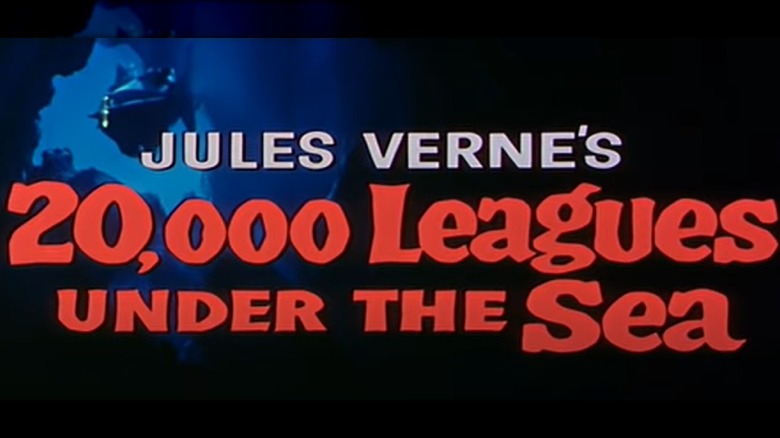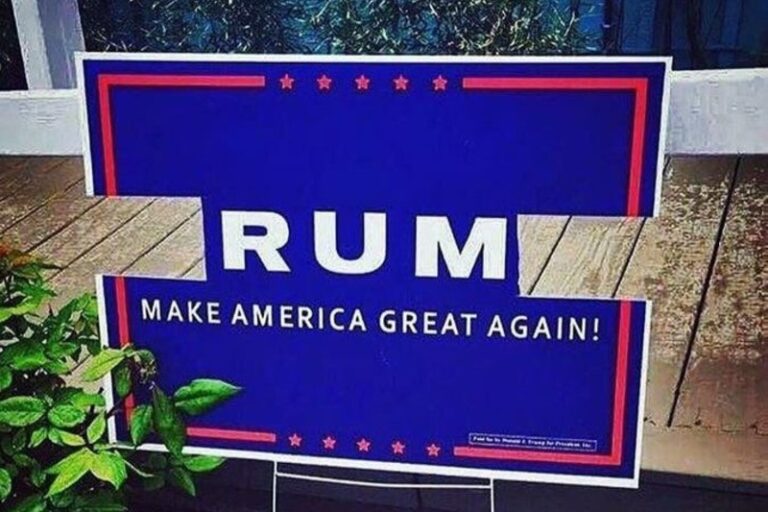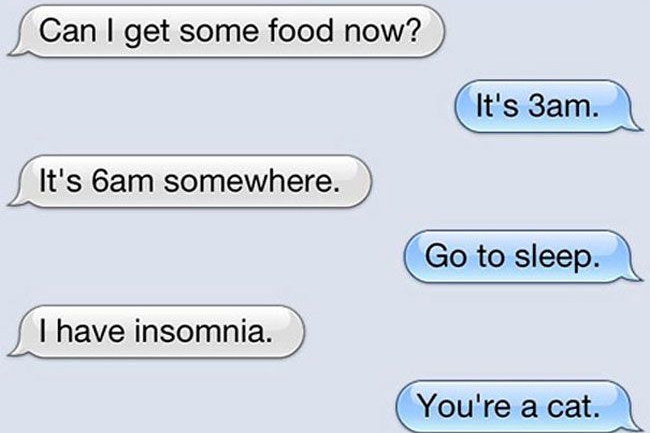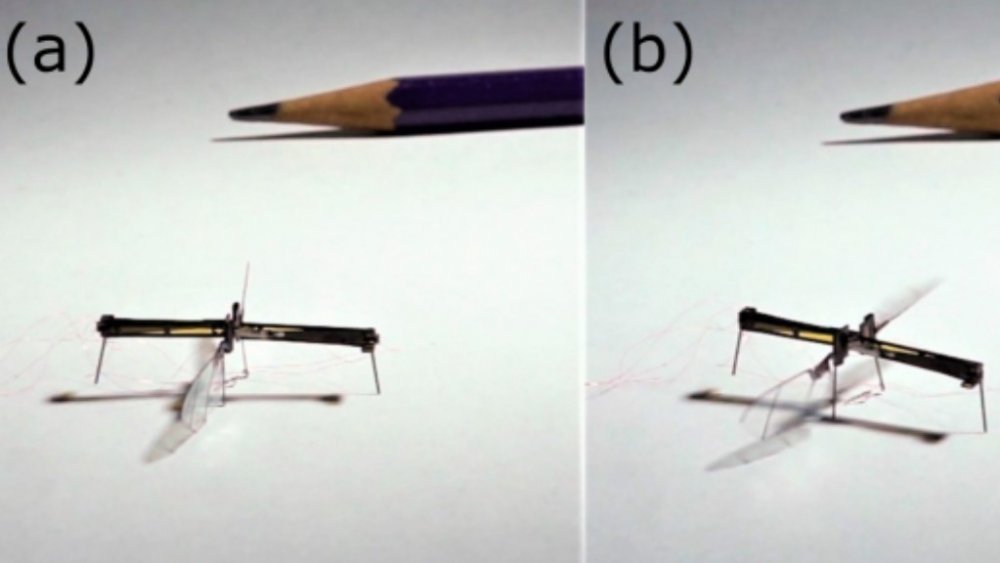
Highly Anticipated Inventions That Totally Bombed
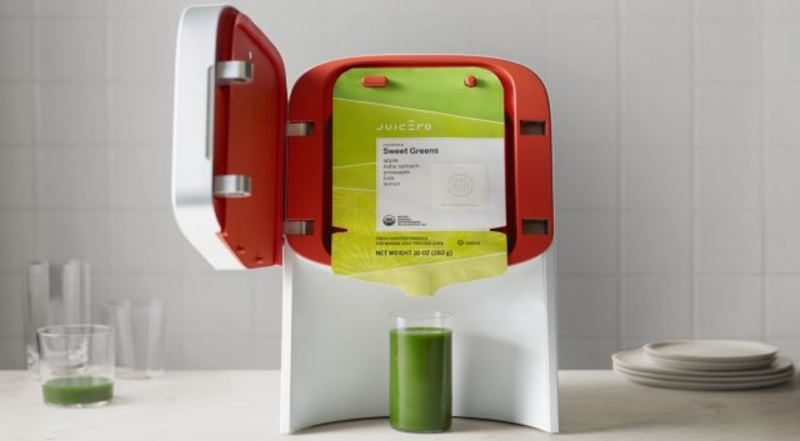
Either they created something unwanted by the public, or they reinvented something that turned out to just be a worse version of the original. Regardless, it’s actually kind of impressive that they went for it anyway. Keep reading to see some of the worst products that have been on the market.
The Ford Edsel
Ford launched the brand-new Ford Edsel automobile in 1958 and things went badly from the start. Despite spending years of time and money on consumer polling, the company didn’t really listen to what their customers were telling them and decided to continue with what they were already doing, which was to create an expensive car, which was not fuel-efficient.
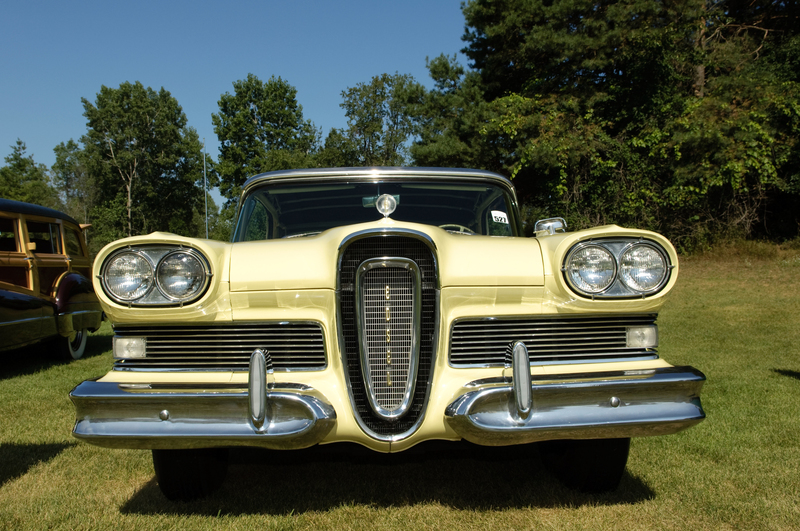
To make matters worse, the stock market took a big dip right before Edsel’s big release. That meant that the middle-class families Ford was counting on to buy these cars couldn’t afford them as their investments were rapidly losing their value. The Edsel fiasco ended with Ford losing $350 million on a car that it had already spent $250 million to build. The cars stopped being sold in 1960. If that wasn’t bad enough, the next product on our list is the very essence of failure.
AromaRama
Going to the movies is an immersive experience, you sit in the dark, watch things on a big screen with sophisticated audio and are often surprised when the movie ends and you return to the real world. But some people thought that involving only the eyes and ears in the experience was not enough, and what was really missing is the sense of smell. We’re not sure we agree, but two companies, in 1959 and 1960, truly believed that this was the future of cinema and they were willing to put their money where their nose is. That was the start of the battle of domination over the smelly side of the movies.
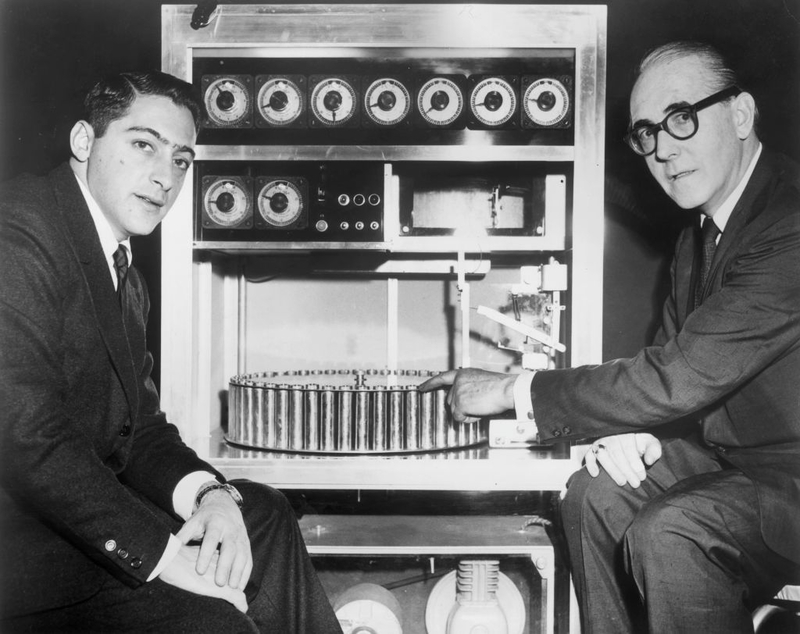
Two companies, named AromaRama and Smell-O-Vision, began adding scents to the movies which changed according to the scene being played. Unfortunately, since the smells were distributed via the air conditioning vents, they were not distributed equally, and viewers did not share the same experience. Also, what these companies didn’t seem to take into account was that some scenes are better off unscented. As you already know, the idea didn’t catch on and soon movie theaters once again smelled only of popcorn. Some things were a flop in the movie theater, while others tried to take them home theater by storm but failed to make an impact.
The Sony Betamax
Although it never caught on, the Sony Betamax is looked back on fondly by technology enthusiasts. The home video format was released in 1975, as direct competition to the VHS format developed by JVC. Sony’s goal was to conquer the home viewing market, but we all know who came out on top. The VHS was the clear winner, although the Betamax had the superior viewing quality.
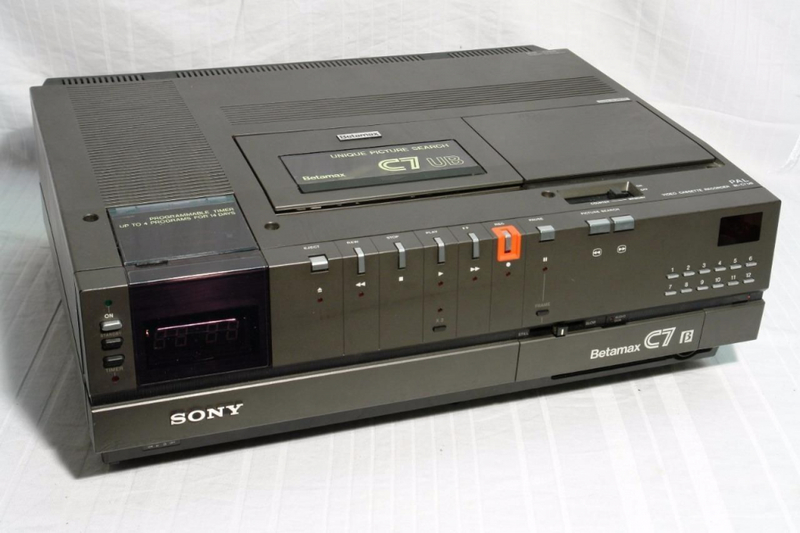
The problem was, that the Betamax tapes were bigger, which made them and their players more expensive to make. VHS tapes could also hold more video, two hours versus Betamax’s one. The final nail in the Betamax coffin was that Sony insisted on making the format proprietary, meaning only they could make the recording devices, which meant VHS grew at a much faster rate. Sony took the loss and began working on their next home viewing idea, the LaserDisc. Another product that failed to launch in the 70’s seems to have simply not had the touch.
Touch of Yogurt Shampoo by Clairol
In the 1970s, the natural beauty products trend was becoming increasingly popular. Ingredients such as fruit, honey, and surprisingly even beer, were being used in various shampoos. At the same time, yogurt was gaining a reputation as being really good for you. Shampoo company Clairol decided to monopolize on both trends and came out with Clairol’s Touch of Yogurt Shampoo. Unfortunately, while both trends were popular, that did not mean that people wanted them both together, especially when that meant putting an aged diary product on their heads.

This wasn’t Clairol’s only dairy-based disaster. They also launched the Touch of Buttermilk Shampoo during the 1970s. The company and its competitors have since decided that milk has no place outside the diary aisle. If putting yogurt in shampoo seems strange to you, wait until you see what Coke did to their soda.
New Coke
In the 1980s, everyone had an opinion on which was better, Coke or Pepsi. After completing rigorous taste tastes, Pepsi went public with results that proved that Americans preferred Pepsi’s sweeter soda recipe. Coke decided to respond, aggressively. In 1985, they released New Coke, the soda which promised to be sweeter than all others and was intended to replace the old recipe for good.
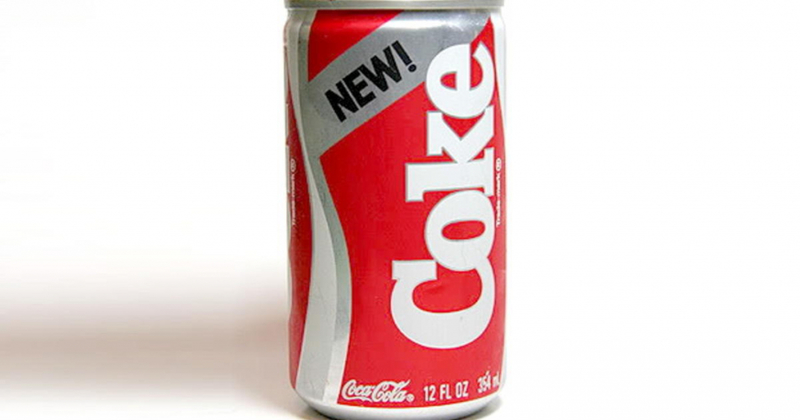
The only problem was that Coke lovers didn’t like New Coke. They said it didn’t taste good and they wanted their old coke back. It only took three months before the company got rid of the new recipe and went back to the old one. The original coke recipe is now known as Coca-Cola Classic and is beloved by many to this day. More than one cola company made some seriously bad gambles during the 1980s.
Pepsi AM
One Pepsi fail most of us remember is their launch of Crystal Pepsi, which got a strange revival in 2016, but the company had an even bigger fiasco which few remember when they launched Pepsi AM in 1989. The soda was marketed as something to drink in the morning instead of coffee, with 28% more caffeine than the original Pepsi.
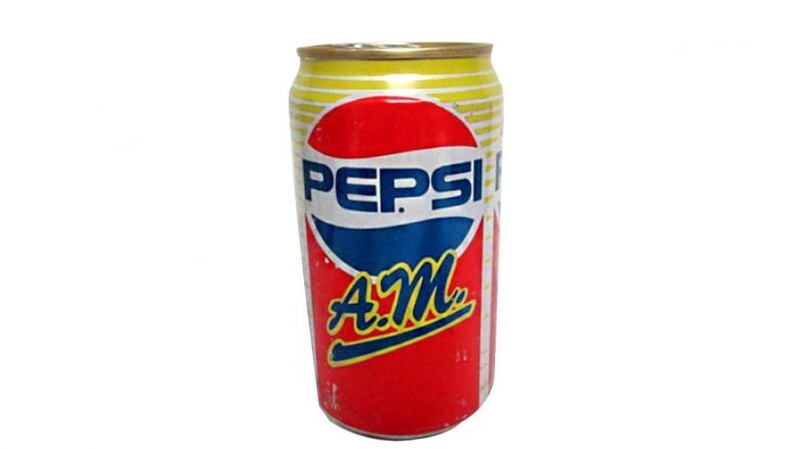
Although Pepsi advertised the new product like crazy, it had no real chance of replacing people’s morning coffee, which still had 77% more caffeine than the new soda brand. Pepsi AM had a few devoted fans for a while but never really took off like Pepsi bosses were hoping it would. Sales eventually dropped and Pepsi AM was removed from the shelves only a year after its release. The next product proves that smoking the competition isn’t as easy as it seems.
RJ Reynolds Smokeless Cigarettes
Yes, you read that right, and if you’re wondering why that seemed like a good idea, we’re sure RJ Reynolds also asked themselves that, after the fact. The company was looking for some good publicity following multiple news stories about the dangers of smoking. They came up with smokeless cigarettes, a “healthier” alternative which contained less charcoal, giving them a relatively smokeless burn.

To say these new cigarettes were not a hit with smokers would be an understatement. They found them hard to light, and just as hard to actually inhale. The fact that the cigarettes didn’t contain nicotine, meant that they were not fun to smoke, and most users preferred to dump them in the garbage rather than smoking them. But don’t worry too much about RJ Reynolds, they may have missed the mark with their smokeless cigarettes, but have since found their niche in e-cigarettes and are currently that product’s leading manufacturers. Cigarettes without smoke may sound like a wild idea, but this company trying to sell water is even wilder.
Coors Rocky Mountain Spring Water
Since we need water to live, it doesn’t seem too hard to be able to sell people water and it’s no wonder that bottled water is such a big business. One company, however, found that selling people something which keeps them alive was surprisingly difficult. In 1990, Coors tried to go off-brand and their customers weren’t having it.
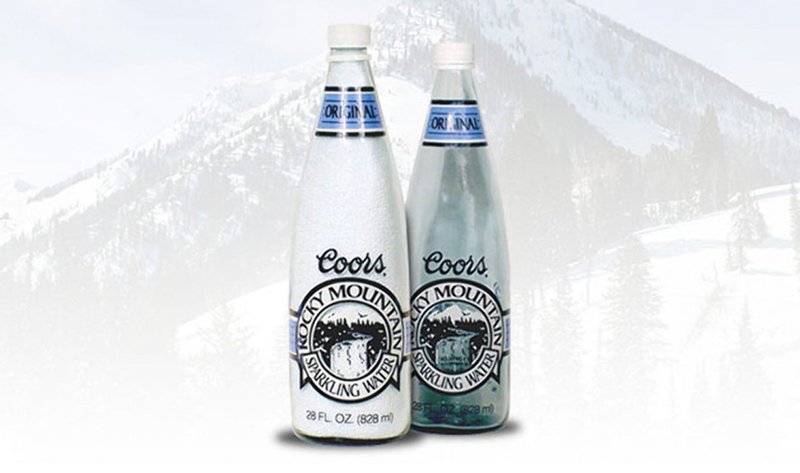
The company used water to make their beer and decided the natural next step was to bottle that water and sell it. The problem was, that they used their famous Coors Rocky Mountain logo on the bottles. Many consumers were confused and probably a little disappointed when they discovered the product didn’t contain alcohol. It only took two years for Coors to get out of the bottled water business. Keep reading to find out what the iPods’ grandfather was like.
Apple Newton
In the 1990s, long before they came out with their revolutionary iPods, iPads, and iPhones, the Apple company was not doing well, but they still had their sights on changing the world. Apple’s very first tablet, which was released in 1993, was called the Newton. The PDA device fell flat with consumers because it was too big and too expensive.
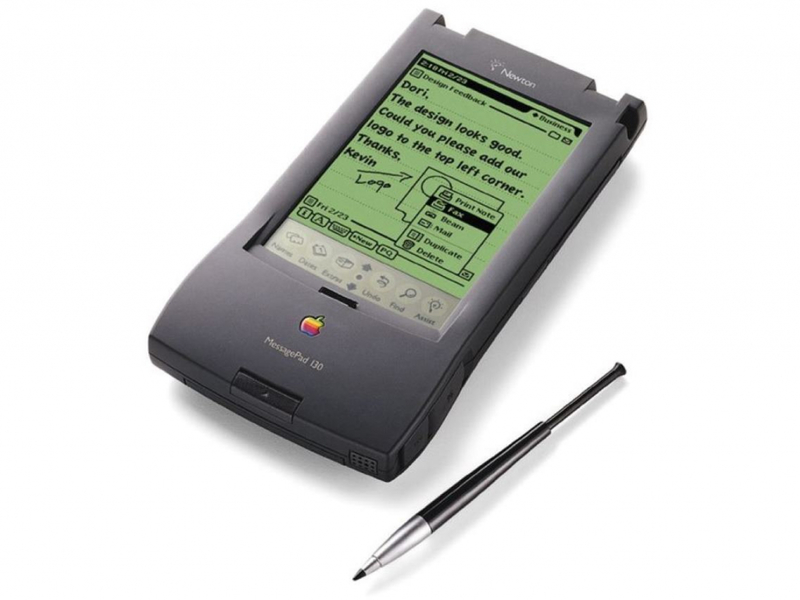
The Newton also featured a stylus that was supposed to help users write things on the screen. Unfortunately, the feature worked so badly, the legendary sitcom The Simpsons even made fun of it in an episode. Most Newton users were unhappy with the product and Apple decided to take a break from creating tablets. They came back with a bang, however, and changed the tablet game forever when they released the iPad almost twenty years later. If you think Apple had its share of flops, take a look at the operating system that Microsoft launched next.
Microsoft Bob
It may seem hard to believe or remember, but in 1995 using a computer was a new thing to many people and not that easy to master. Microsoft decided to address the issue by introducing Microsoft Bob, which was supposed to help you use your personal computer. Bob made things simpler by graphically showing you the programs and functions that were available. For example, if you wanted to write a document, you clicked on the desk icon and followed it up with the pen and paper.
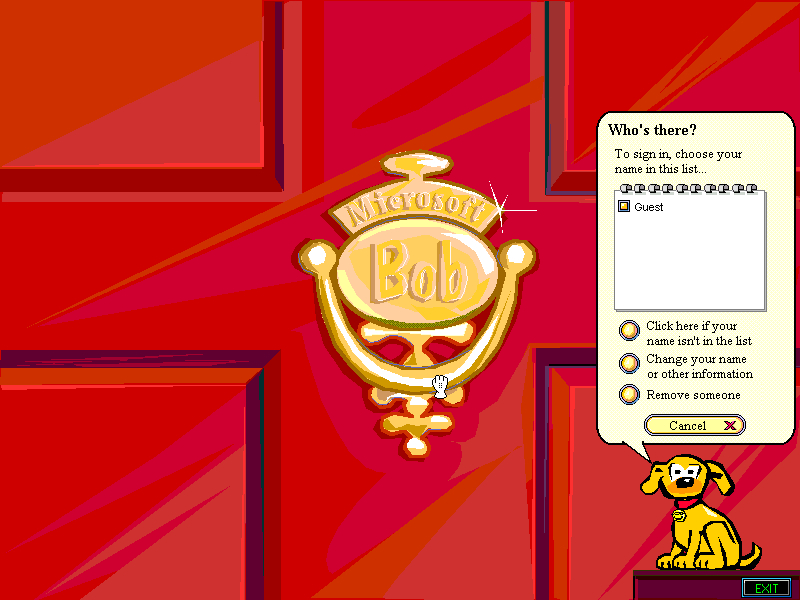
The idea may have been good, or maybe not, but we’ll never know because Bob took an enormous amount of computing power to run. The computers of the time simply could not handle it and became slow and sluggish. Microsoft Bob was withdrawn from the market after only one year, with Bill Gates famously saying, “Bob died,” but parts of it are still around, like Rover, the cartoon dog assistant. This gaming company had a virtual nightmare on their hands.
Nintendo Virtual Boy
Nintendo was a pioneer of virtual reality games in 1995 when it introduced Virtual Boy, but unfortunately, they couldn’t deliver on their promise. Virtual Boy had a big and clunky console and headset. You would think the massive hardware would mean that the games would be good, but in fact, they featured low-resolution graphics in black and red. There was nothing in the games that mimicked real life at all.
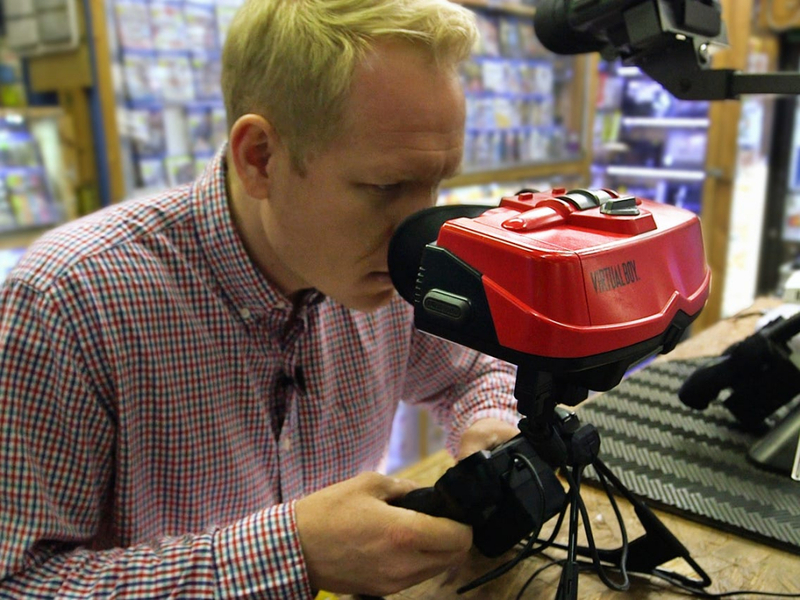
Another issue was the safety feature Nintendo added – the device had a timer built-in which let the users know to take a break every 15 minutes to protect their eyes. Nintendo may have been doing the responsible thing to protect their users, but the alarms and the warnings on the box made people feel that the game was unsafe. When you take all of that into account, and the fact that the games were not as good as the ones in the regular gaming console, it’s no wonder the Virtual Boy was Nintendo’s biggest hardware flop ever. This fast-food company’s thinking was too advanced for the times.
McDonald’s Arch Deluxe
The classic hamburger is a staple of American cuisine, but these days people also appreciate fancier variations of this fast food. It’s not unusual to find burgers offered with no bun in a red wine reduction, for twice the price of course. McDonald’s must have seen this trend coming and in 1996 they decided to launch a gourmet burger before anyone else had even thought of the idea. That is how the Arch deluxe was born, a more mature burger that targeted adults.

Many people claim that the burger was delicious, made with peppered bacon and a secret mayonnaise, mustard sauce. However, it seemed like McDonald’s made a big miscalculation when it came to marketing. They aired commercials that showed kids looking at the burger and being disgusted. After that, it seemed like the parents had no interest in the burger either. This soda is so out of this world, the company that made it sunk into a black hole.
Orbitz Soda
This otherworldly soda was marketed for kids, with floating candy balls that were meant to look like a lava lamp. The product looked inviting, but unfortunately did not taste good, with many comparing it to cough syrup. The creators should have known this product wasn’t going to make it when they advertised it as a “texturally enhanced alternative beverage.” That does not sound good at all, or even good for you
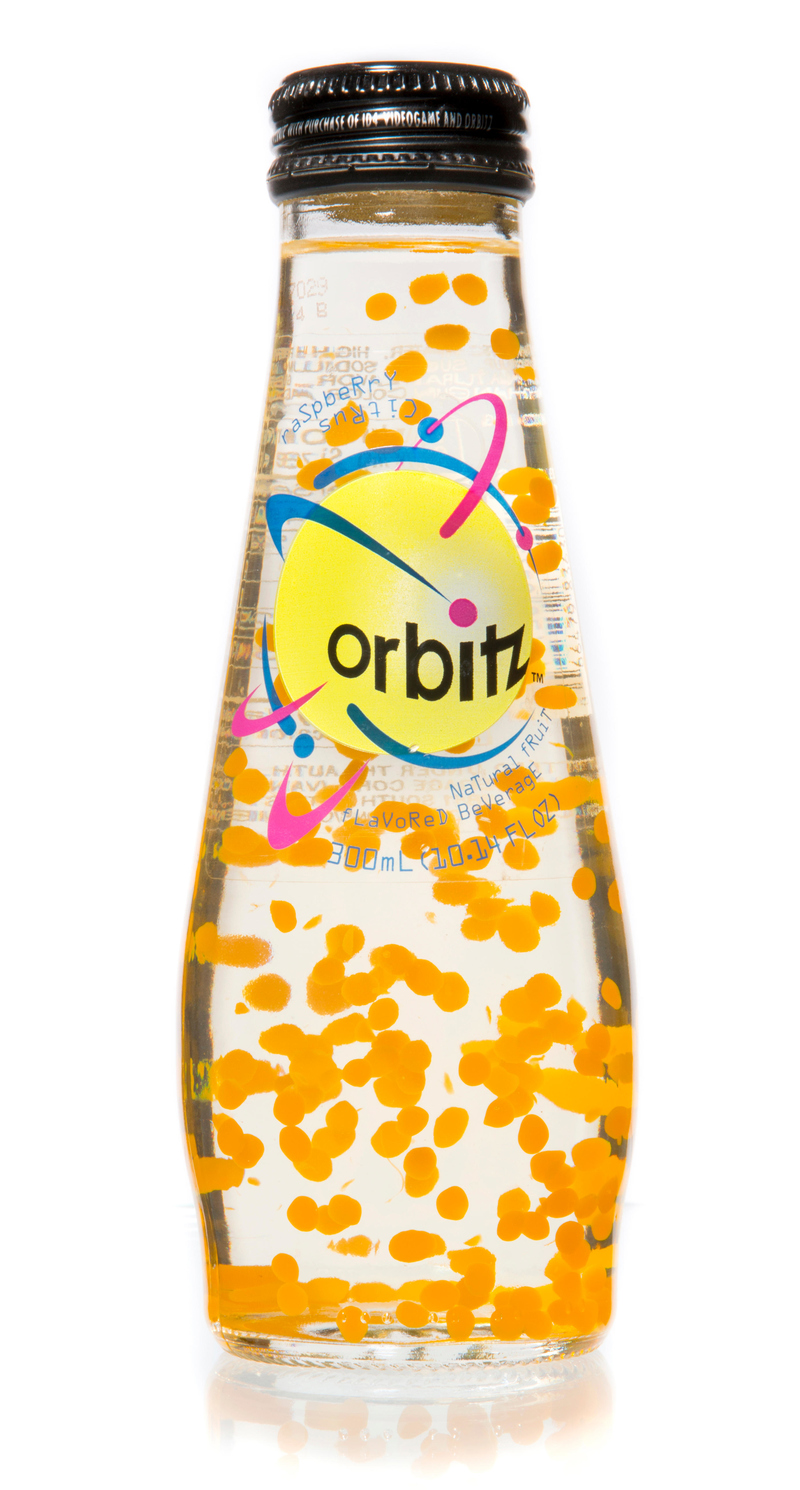
Despite the colored gelatin balls, which were extremely eye-catching, Orbitz Soda, which launched in 1997, was pulled off the shelves in less than a year. However, if you are intrigued and would like to try one of them for yourself, just head to eBay. For $20 you can enjoy the out of this world experience of drinking it. People who munched on the next snack food had to stay close to the toilet.
Frito Lay WOW Chips
Who wouldn’t want to enjoy the flavor of potato chips but without the fat? That was the premise of Frito Lay’s WOW Chips, which were released in 1998. The people who tried this product may never forget the experience, the flavor may have been great, but the aftermath was not. Turns out that instead of fat, the company used a secret ingredient, a compound known as Olestra. Although Olestra may have not impacted the flavor, it definitely impacted the bowels of the people who were snacking on the chips, making them run to the bathroom after every bag. What no one seemed to know, is that if it is overconsumed, Olestra becomes an intense laxative.
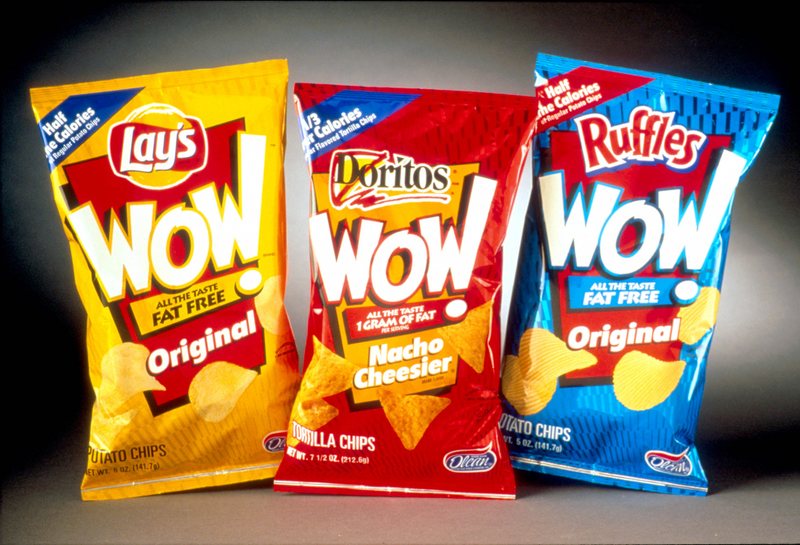
There wasn’t a problem if you ate the recommended serving size, but whoever does, especially with a bag of chips. Wow, chips were quickly withdrawn from the market and Frito Lay was left dealing with a bunch of lawsuits. If you never bought into the idea of healthy chips, let’s see what you think of this next strangely branded treat.
Cosmopolitan Yogurt
Teenage girls and women line up to read Cosmopolitan magazine, so the people behind it decided to monopolize on their success and start selling yogurt. Although women may like magazines and yogurt, and may even eat one while reading the other, the connection between the two is just not clear enough. The consumers didn’t really get it, and neither do we. The inexplicably branded Cosmopolitan Yogurt hit the grocery stores in 1999.
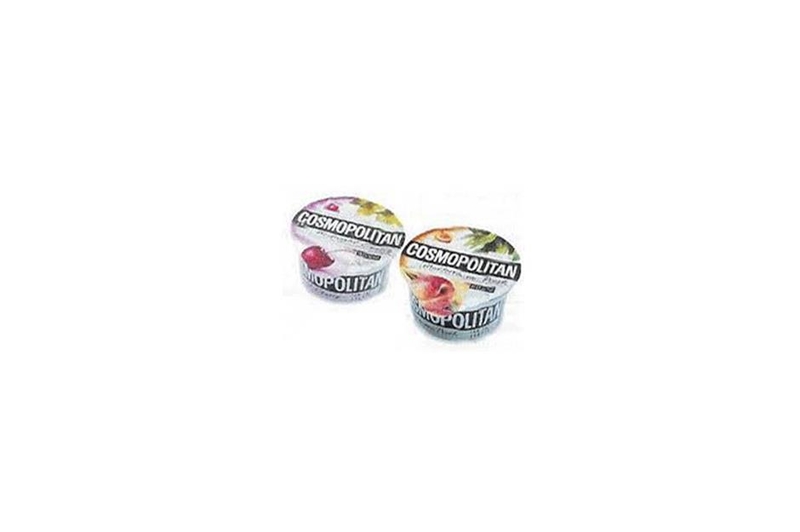
We have no idea if it was any good, but in an overly saturated yogurt market, it seems like neither did consumers because they just weren’t buying it. The product was pulled from the shelves after only six weeks. Seems like Cosmo should stick to beauty secrets and celebrity interviews and leave the yogurt to the experts. This next flop was believed by many to be the future of personal transportation.
Segway
In 2001, the first Segway Personal Transporter was released and changed the lives of mall cops forever. The release made a lot of waves, and tech leaders from all over got super excited about these fancy scooters and their self-balancing technology. They were embraced by Amazon CEO Jeff Bezos and Apple creator Steve Jobs, who believed that in the future, every person who lived in a city would own a Segway.

Unfortunately, the Segway never really hit its stride, after they were outlawed from using sidewalks because of the danger to pedestrians. They also could not use roads, because their top speed of 12 miles an hour was too slow. Add in the exorbitant cost of $5,000 for a new scooter, and you will understand why transportation has pretty much stayed the same. The high retail price was also an issue for the fashionable fail coming up next.
Oakley THUMP
Sunglass giant Oakley decided to play up the outdoorsy side of their shades by adding a built-in MP3 player. Their reasoning, you can listen to music while riding your bike, jogging or just lounging in the sun. The THUMP, however, was on the pricey side, $249 to $349 depending on if you chose the 256 MB, the 512 MB, or the 1 GB version. Also, they did not look great and the worst part, apparently the sound was extremely weak.

‘Oakley also decided to help you keep your music with you in case you were indoors. They offered the sunglasses with the ever-fashionable flip lenses so that you could keep them on inside and look amazing doing it. Unsurprisingly, Oakley THUMP shades were off the market in the blink of an eye. But that wasn’t the only big fail in the world of MP3’s.
Microsoft Zune
When Microsoft came out with its MP3 player Zune in 2006, the iPod had already been around for five years. The Zune worked well enough, but its brown boxy appearance couldn’t compete with the sleek and futuristic look of the iPod. And although the Zune had some cool features, it had nothing really new to add to the market and was late to the party and therefor simply never stood a chance.
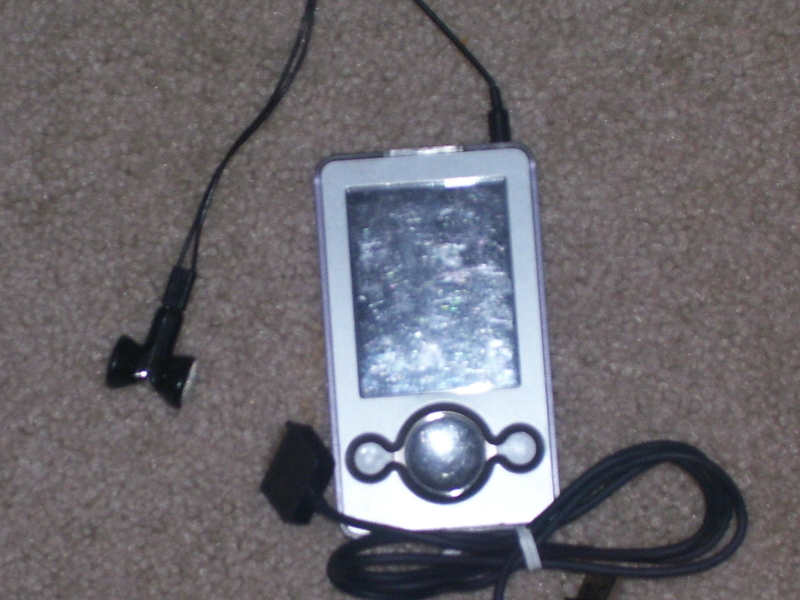
Zune’s coolest feature was the option for users to share songs. Users could transfer songs to each other using wi-fi if they were in the same space. But due to piracy concerns, the songs could only be played three times each before they disappeared from the device. The Zune was around for five years before it, and its pirated songs, disappeared forever, although you can still buy one on eBay. Read on for a flip phone epic flop.
Mobile ESPN
Five years before Apple released its first iPhone, ESPN took their shot at dominating the smartphone playing field. They launched their branded flip phone in 2006. It cost $300, and you had to pay roughly $225 a month for wireless service. A few hard-core sports fans were willing to dish out the cash, because the phone received the latest updates about sporting events and let you browse the ESPN website.
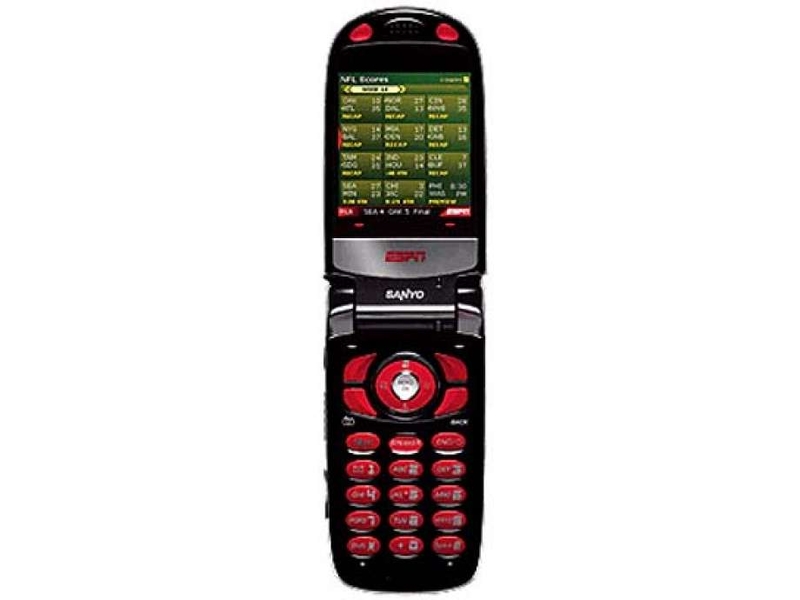
The concept soon collapsed due to low sales, and ESPN put their content on the Verizon mobile internet service. Once the iPhone came out, which allowed you to visit any website you wanted, the whole thing became irrelevant. But don’t feel too bad for ESPN, they have since found a way to use the Mobile ESPN software to send you those annoying push notifications. Sony may have had a failure on their hands with Betamax, but things went their way in the next round.
HD DVD
As technology progressed, the quality of home video Improved. At this time, DVD was the norm, but when more and more HD TV’s were purchased, DVDs couldn’t keep up with their superior capabilities. Toshiba tried to take over the market with its HD DVD format and players and even partnered up with Microsoft’s popular gaming console Xbox 360.
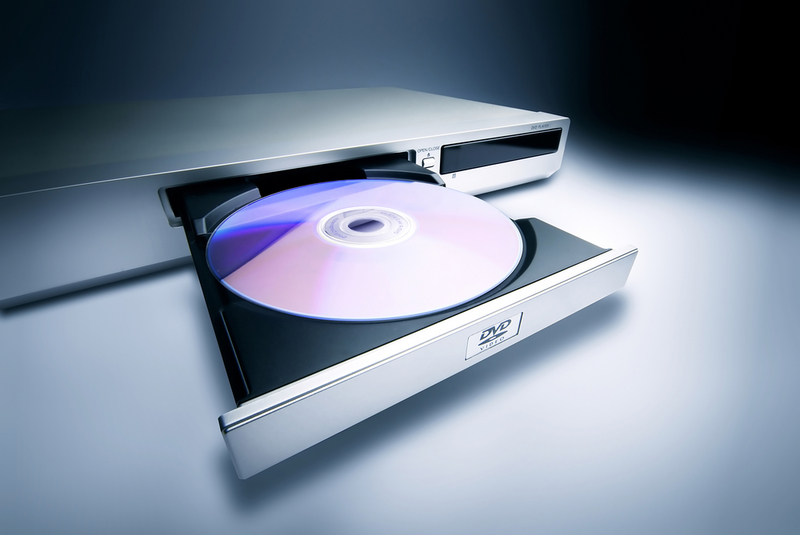
Sony, however, saw their chance and launched the Blu-ray format. They overtook Toshiba by making deals with the major movie studios, meaning that many of the most popular movies were only available on Blu-ray. They also used their own successful gaming console, the PlayStation 2 and included Blu-ray playback functionality within it. Even now, Blu-ray is the leading format. HD DVD went the way of the dodo only two years after its initial release. Read on to meet YouTube’s older and less successful relative.
Joost
Video calling software Skype was a big hit and its makers were ready to take on their next challenge, letting people watch videos from anywhere on the internet. They named the product Joost and it was launched in 2007, amidst promises of your favorite TV shows on-demand and live sporting events. There are many websites that you know, such as YouTube, Netflix, and Hulu who ended up doing just that and were incredible successes, unfortunately, Joost was not.

The first issue was that Joost users had to download a program to their computer, similarly to Skype. The second and much bigger one was that the program was hard to use and often had video delays. Two years after its launch, Joost was sold and in 2012 it was shut down completely. This web game also had an extremely short life.
Google Lively
Avatar games like Second Life and The Sims were extremely popular in the 2000s because they gave players the chance to be a completely different person than they were in reality. Your avatar, which you designed, could meet people, talk to them, buy things and experience a new life. These games were a hit, which prompted Google to come out with its own version called Lively. Their game, which was launched in July 2008, was only online for four and a half months.
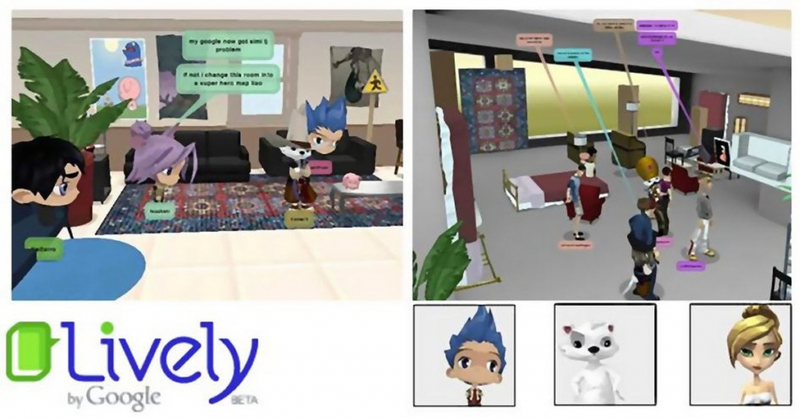
When the economy went bust in 2008, Google decided to focus on more important things and dropped Lively like a hot potato. Apparently, if you have never gotten over the loss, some version of the game is still out there, maintained by extremely dedicated users. This next gadget predated the iPad, but in the end, it just couldn’t compete.
JooJoo
In 2010, slightly before the iPad became the tablet which ruled all tablets (for a while at least), the JooJoo was released. If the strange name doesn’t sound familiar it is because the product never really took off. Its release was plagued with naming drama and for some reason, even though it started out as the CrunchPad, the name JooJoo ultimately prevailed.

When the iPad launched, it became infinitely clear that the JooJoo was simply inferior. It was too heavy, hard to operate and bad at playing videos. The final nail in its coffin was that It didn’t have any apps while the iPad debuted with many. When you take into account that both tablets cost the same, it’s not surprising that the JooJoo was discontinued only a year after its release. The company famous for its PDA could not make the transition into tablets.
Blackberry PlayBook
Back in the day, Blackberries were more than just a phone or a PDA (personal digital assistant), they were a status symbol. They let the world know that you were taking care of business. Whoever was checking their Blackberry while they were out and about was both busy and important and they wanted you to know it. The devices, however, were not just about making a statement, they were also convenient and easy to use. The company should have kept those things in mind when designing the Blackberry PlayBook which came out in 2011.
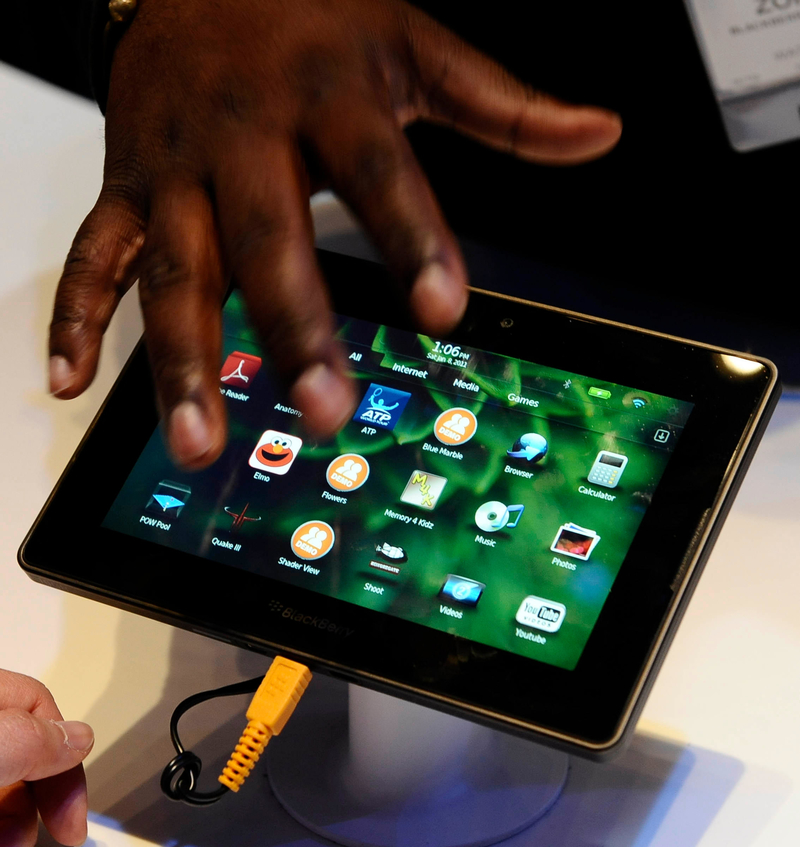
This tablet-style device was great if you wanted to watch videos or browse the web, but it had one major design flaw, you couldn’t check your email on it. The only way to do so was to use the PlayBook together with your regular Blackberry, which made using it more complicated for people who owned a Blackberry and impossible for those who didn’t. Users found this unacceptable and the PlayBook quickly fell out of favor. This streaming giant decided to make things more complicated for their users in this almost unwatchable fail.
Qwikster
Netflix made a name for itself by making things easier for its users by letting them skip the drive to the video store. Over time though, streaming became an ever-expanding part of their business. In 2011, the company decided that it would be a good idea to create a new service called Qwikster to handle the mail DVD rentals, while Netflix would continue to focus on streaming television and movies.
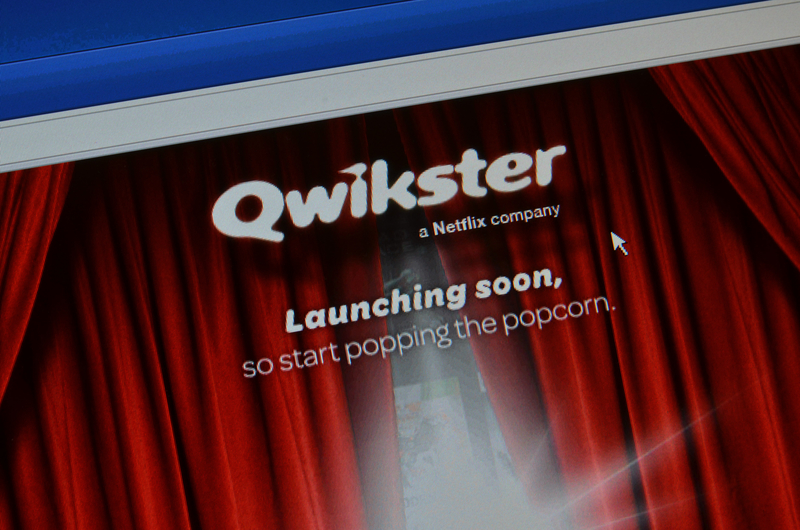
Company execs may have thought this was a great idea, but the consumers did not. They already had one account which was for everything and had no desire to complicate things. The move caused Netflix stocks to plummet and CEO Reed Hastings announced that the plan was canceled only 23 days after it was announced. This competitor wanted to compete with Apple so bad it hurt and failed.
HP Touchpad
Another competitor who was trying to get a foothold in the tablet market was HP. They released the HP Touchpad in 2011 and put a lot of money and effort into promoting it. Before the product was even available, the company held a special event to announce it, but the time between the announcement and its release was too long and consumer interest waned, with no one exactly sure when they would arrive in stores.
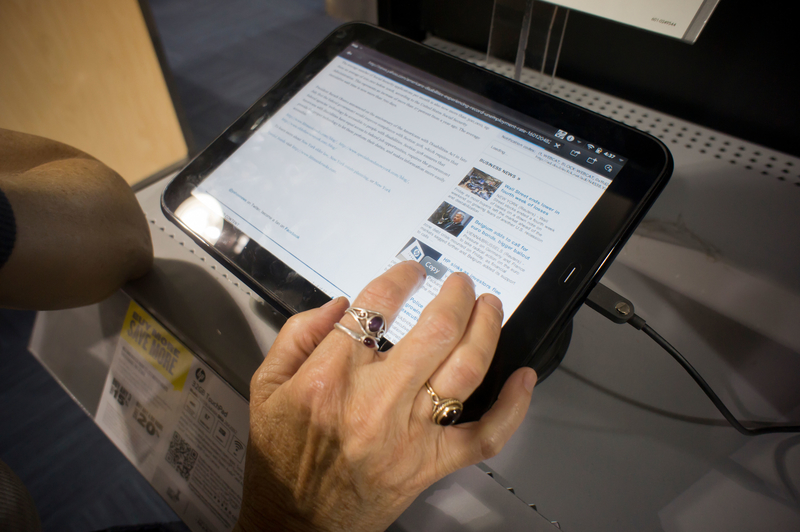
Although the tablet wasn’t bad, due to low sales HP must have felt that it couldn’t compete with Apple. They announced that the Touchpad was going to be discontinued after only a month and a half on the market. The prices immediately went way down, and you could purchase one for only 99$. Ironically, in the end, the demand was extremely high for these discounted tablets. The outlook for this expensive gadget looked bright, but then the clouds rolled in.
Google Glass
The futuristic Google Glass was an incredibly anticipated and highly buzzed product. It was released in 2013 and hyped as technology that you could wear. Over time, however, the reality of Google Glass became apparent and the excitement definitely waned as its shortcoming came to light. The glasses, for instance, could not be worn in public places like movie theatres because they are always able to shoot video and take pictures.
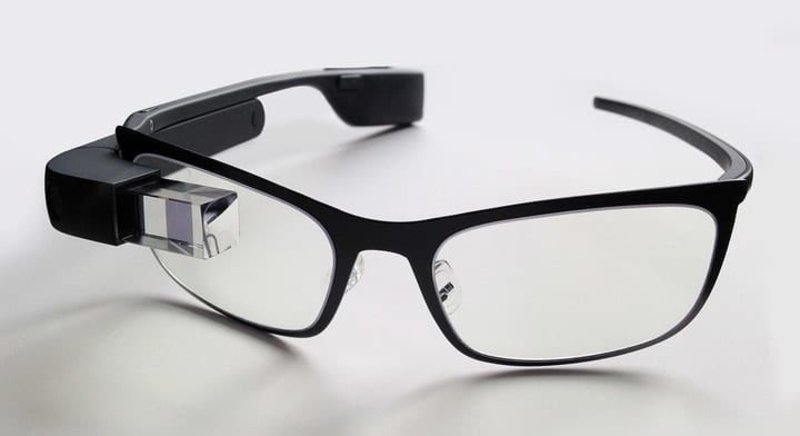
Not only does that sound a little creepy and bring up privacy issues, but the glasses were also soon found to be redundant. Why would you need an expensive computer inside your glasses, when you already have everything you need in the form of a smartphone in your pocket, which is more convenient and can be put away as needed. This app may bear a successful name, but it was anything but.
Facebook Home
In 2013, Facebook offered Android users the option of having it take over their home screen by installing the Facebook Home app and paying a two-year subscription fee of $99. This was the height of Facebook’s success before the backlash about privacy and a lot of people were tempted to give the company even more access to their device.
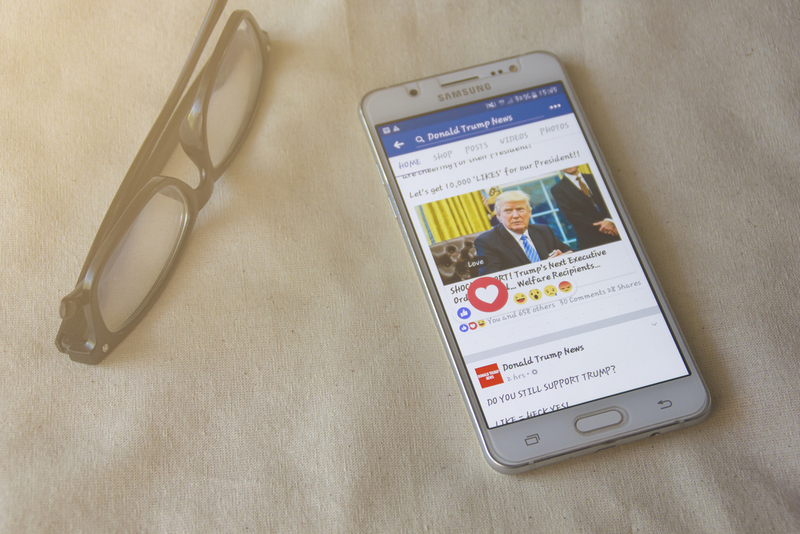
Those who did soon regretted it. The app drained your phone’s battery and data plan, hid other apps and filled your screen with unending notifications. The price dropped to 99 cents only a month after its release, and after multiple attempts to fix the problems, the whole thing was scrapped. Amazon’s smartphone offering was not the smartest in the bunch.
Amazon Fire Phone
Amazon had some success with its affordable and high-quality Fire tablets, so the logical next step was for them to release a smartphone. They came up with the Amazon Fire Phone, which was produced and released in a rush in 2014 and it showed. The first thing that surprised consumers was the high price and the second was its limited functionality.
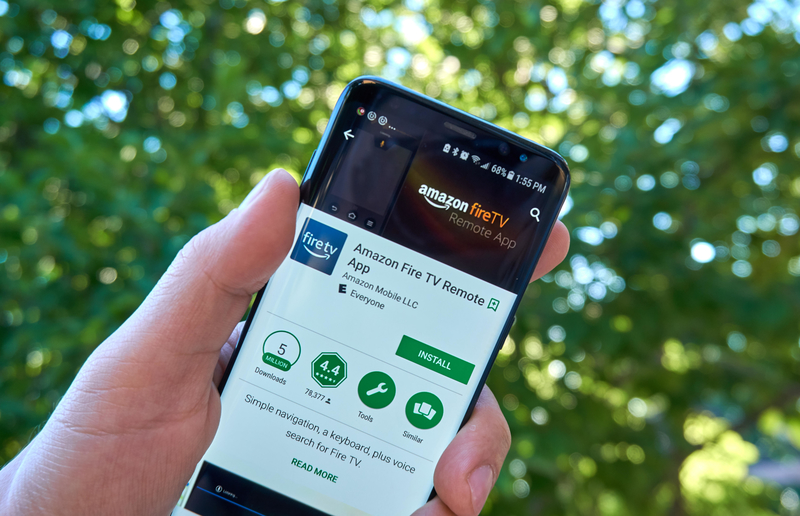
The phone had a hefty price tag of $650, which is pretty much the same price as a new iPhone, but many apps wouldn’t work on it. Users complained that they couldn’t even use basic things like Google Maps. The phone’s main selling point, 3D face scanning technology, was dismissed by users as a gimmick and it only took Amazon one year to see that the phone was a major fail, and have it discontinued. They have since stayed out of the smartphone game, at least for now… This product flamed hot and went out with a bang.
Samsung Galaxy Note 7
The Samsung Galaxy Note 7 smartphone is infamous all over the world for catching on fire and exploding. They were launched in July 2016 and were recalled twice, and only one day after the second recall the phones were scrapped for good. At first, it was believed, or at least claimed, that bad batteries were to blame for the overheating and that they simply needed to be replaced.
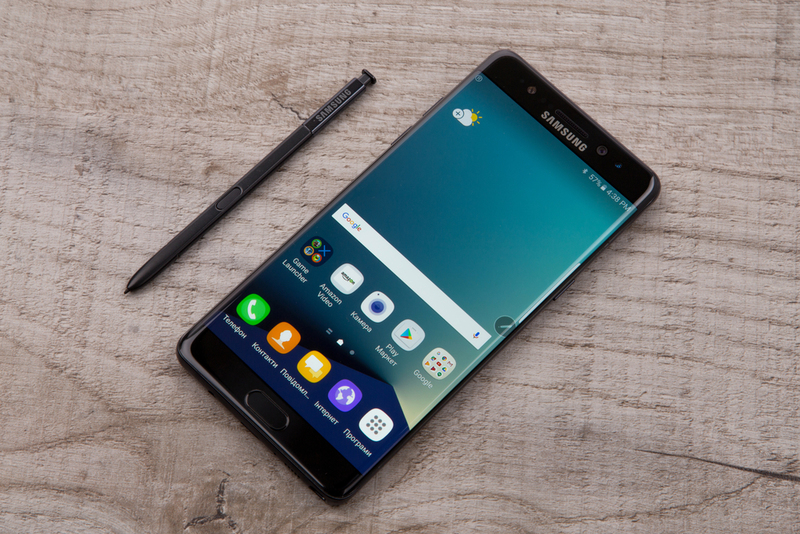
Things went from bad to worse, when the FAA banned the phones from being used on flights because they were a fire hazard. By November 2016, Samsung recalled the phones for good. The company has not given up on making smartphones. Their current model is the Galaxy Note 8 and there is no news that has any similar combustible issues.
E.T. the Extra-Terrestrial Game
Atari introduced the E.T. the Extra-Terrestrial video game in 1982, trying to capitalize on the success of the Stephen Spielberg hit film. Unfortunately, that left them with only five weeks of development instead of the typical months or even years spent on other games. E.T. quickly got a reputation as being impossibly difficult and its sales were terrible.

The company spent $21 million just to buy the rights for the franchise and another $5 million in promotions. Atari created 4 million copies, however, only 1.5 million were ever sold. The rest were buried in a landfill, which is a pretty apt place for this spectacular video game fail.
Satisfries
Who wouldn’t want fries that tasted just as good, but were healthier and had less fat than regular fries? No wonder Burger King thought they had a winning idea when they released Satisfries in 2013. The secret was the use of a different , less porous batter which absorbed less oil while frying. The fries were actually healthier, the problem was that BK didn’t get the message to consumers.

In addition to their marketing problem, the fries also cost more than regular fries, which made consumers unlikely to try them. In the end, Satisfries were a flop and Burger King took them off them menu in 2014, less than a year after they were released.
Cheetos Lip Balm
Lip balm has been a popular item for decades, especially in the drier winter months, with veteran companies like Chapstick offering their costumers different and enticing flavors like cherry or vanilla. It seems like not every flavor is appropriate for lip balm, however, as snack maker Frito-Lay discovered in 2005.
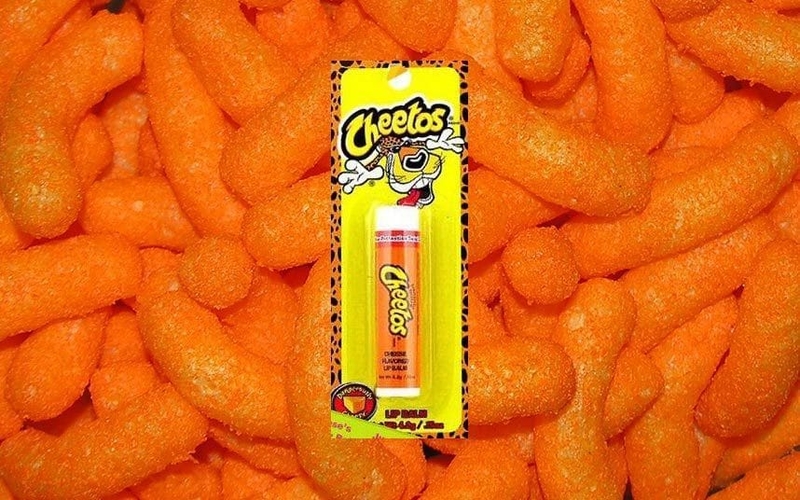
They launched Cheetos flavored lip balm and were somehow surprised that although customers like to snack on cheese puffs, they were not interested in slathering their lips with their taste and smell. Despite the chance to enjoy Cheetos with virtually no calories, this product received countless bad reviews and was a major fail.
Windows Vista
Microsoft launched their Vista operating system in 2007 as the logical continuation to Windows XP, but consumers found it to be anything but. The system was slammed by both users and critics for doing everything worse than Windows, reducing PC performance and causing a variety of connectivity issues.
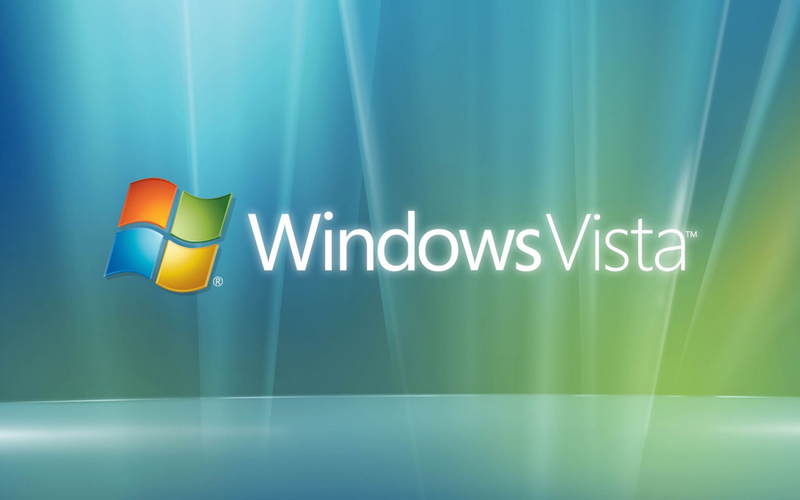
It only took a few months before Dell began offering their new laptops with Window XP and not Vista. In 2012, Microsoft ended mainstream support for Vista and ended all support in 2017, marking the official close to the unsuccessful endeavor.
Colgate Kitchen Entrees
Here is another company that veered too far from its brand. In 1982 Colgate, known for its toothpaste brand, decided to put other things in the mouth of its consumers, namely, frozen dinners which it marketed as Colgate Kitchen Entrees. They were hoping to jump on the prepared foods bandwagon but instead were left by the side of the road.

We have no idea what the quality of the product was because it seems like consumers were unable to make the leap. The Colgate logo seems to have made them wary and the entrees couldn’t compete with other well-established food brands. Not only was the launch unsuccessful, it actually drove down Colgate’s toothpaste sales as well.
Harley Davidson Fragrances
Manly motorcycle company Harley Davidson tried to connect to its feminine side in 1994, and unsurprisingly the results were an unmitigated disaster. They came out with a cologne called Legendary Harley-Davidson, which we would have to assume smelled like burned rubber and engine grease. The sales were underwhelming, but you can’t say that they gave up on the idea quickly, they released their last perfume in 2005, under the name Black Fire.
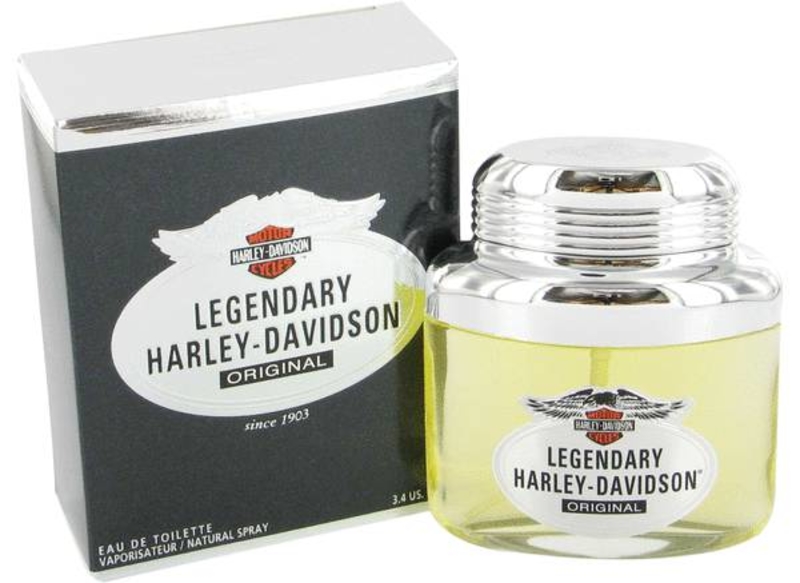
Since that time, all their fragrances have been discontinued. The company also tried to branch into other off-brand products in the 1990s, such as wine coolers and aftershave, but could not make them sell. Seems like they should stick to what they know.
Persil Power
Unilever released its powerful new detergent, Persil Power, in 1994. It had a newly patented stain removal formula known as the Accelerator. The company was so certain of its new formula, that they went out and spent $300 million on marketing the new product without doing any real test marketing. They would end up paying big time for that overconfidence.
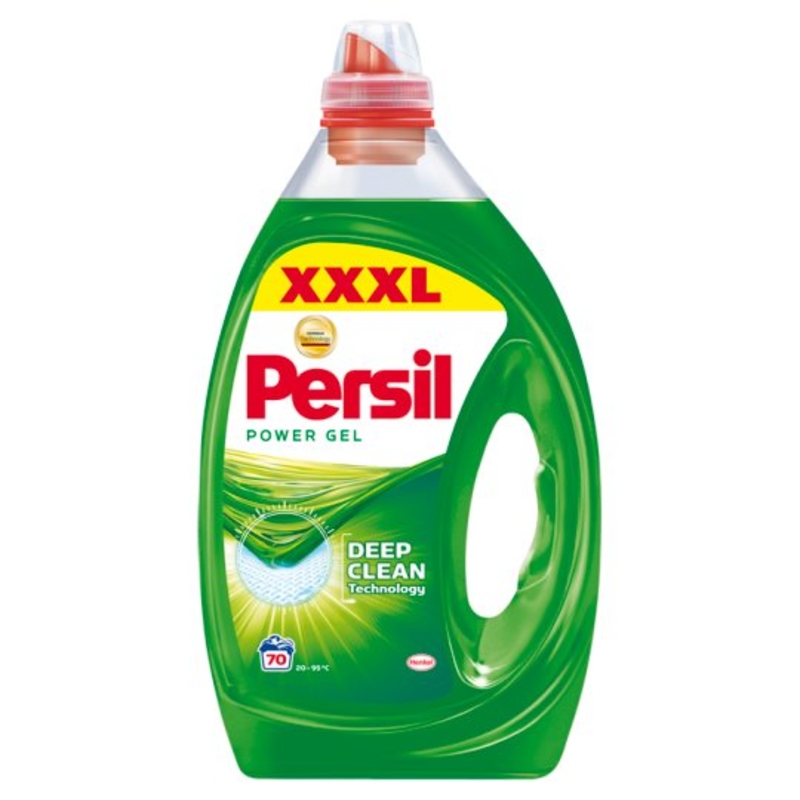
When consumers began using Persil Power, it soon became apparent that the detergent was damaging clothes when used in high temperatures. After only nine months on the market, Persil Power was pulled from the shelves and replaced with Persil New Generation, which did not include the Accelerator formula.
DH 106 Comet
Rome wasn’t built in a day, and neither was the air travel that most of us grew up with. In 1949, De Havilland introduced the Comet, the very first commercial airliner. It was a marvel of innovation, but sadly after just a few years, the Comet was plagued by unexplained crashes, planes which overran the runway and one memorable mid-air explosion.

De Havilland was working hard to redesign the ill-fated plane but was never able to recover after the incidents had damaged their reputation. American companies Douglas and Boeing stepped in and have over time become synonymous with air travel.
DeLorean DMC-12
You may recognize the DeLorean from the Back to the Future film series, where it was used as a time machine. The automobile’s story, however, is far less glamorous. John DeLorean left General Motors and went off on his own to open the DeLorean Motor Company in 1973. They suffered many production delays and finally released the DeLorean DMC-12 in 1981.
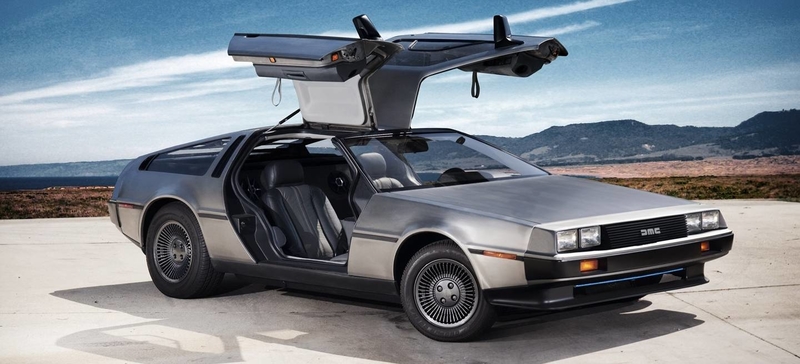
The sports car’s strange design was not embraced by the public and less than half of the 7,000 units produced were sold by 1982. Sadly, the company filed for bankruptcy in 1982, three years too soon to enjoy the sales boost which could have occurred after the movie’s release in 1985.
EZ Squirt
Many of you may remember this product growing up, ketchup in all kinds of crazy colors. The ads made it look really cool, but the reality was just a little bit gross. Green goo on your burgers and fries is not all that appetizing. That, in a nutshell, is the story of EZ Squirt, released by Heinz in 2000. The company decided to cater to one of its core audiences, kids, and produce ketchup, which is typically red, in purple, green and blue.

EZ Squirt was sold in colorful squeeze bottles and was a huge success for the company at first. It didn’t take too long until the novelty wore off and sales began to decline. It took a while, but in January of 2006, Heinz finally called the whole thing off and the colorful condiment was removed from the shelves.
United States Football League
The USFL, which kicked off in 1982, was invented for those who couldn’t live without their football fix during the offseason. The league started off with 12 teams, one of which, the New Jersey Generals, was owned by current President of the United States, Donald Trump.

The league faced many problems including finding stadiums to play in and failed completely when they decided to compete head to head with the NFL by scheduling games in the fall. This caused six teams to quit and made the end of the league in 1985 inevitable.
Friendster
Everyone knows the story of Facebook’s meteoric success, but not every company that tried to make a name for itself in social media managed to do so. Cue Friendster, which actually launched before Facebook in 2002. It allowed users to meet, stay in touch, upload videos and learn about events in their area. This is starting to sound familiar.
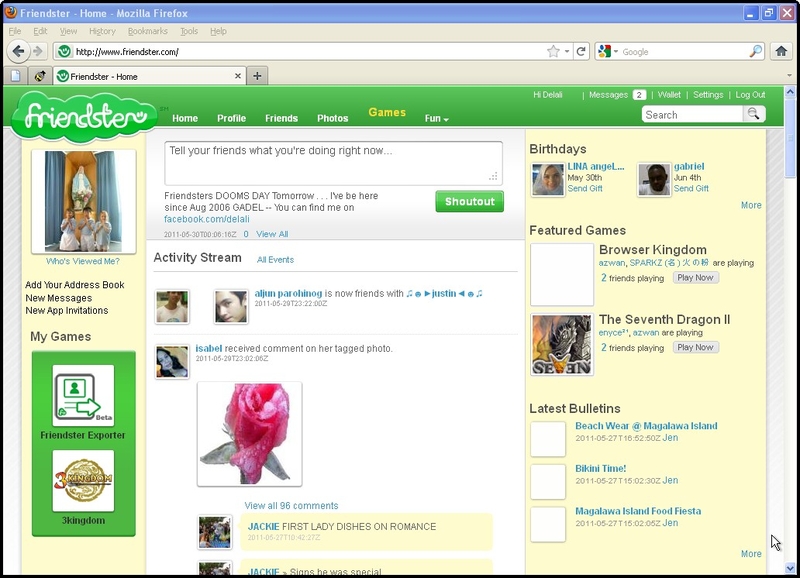
Friendster may have had a solid idea, but their technology was unable to deliver on the promise. They had slow loading times on their page and were not ready to meet the demand when their user base grew. Facebook offered a better user experience and led Friendster to change its focus to gaming in the Asian market. Surprisingly, they only officially stopped offering services in 2015.
Google+
Tech giant Google also tried to launch its own take on social media and give Facebook a run for their money with Google+. They launched the service in 2011, with an enormous and expensive marketing campaign. Things seemed to be going well at first with many people signing up, but less than a year after launch, Google+ had experienced a 98% decline in user engagement.

The problem was that Facebook was already well established and Google+ didn’t really offer anything new. Although it was a failure as a product, Google+ was around until 2019, when it was shut down due to privacy concerns.
Kellogg’s Breakfast Mates
If you’ve ever felt that making cereal is too hard, Kellogg’s has the product for you, or should we say had. The company released Breakfast Mates in 1998, which was a package that contained cereal, a small packet of milk and a plastic spoon. The idea was to save time for busy families with two working parents. When the concept was tested by The New York Times, however, it turned out that the new packaging only shaved one second off preparation time from regular cereal.
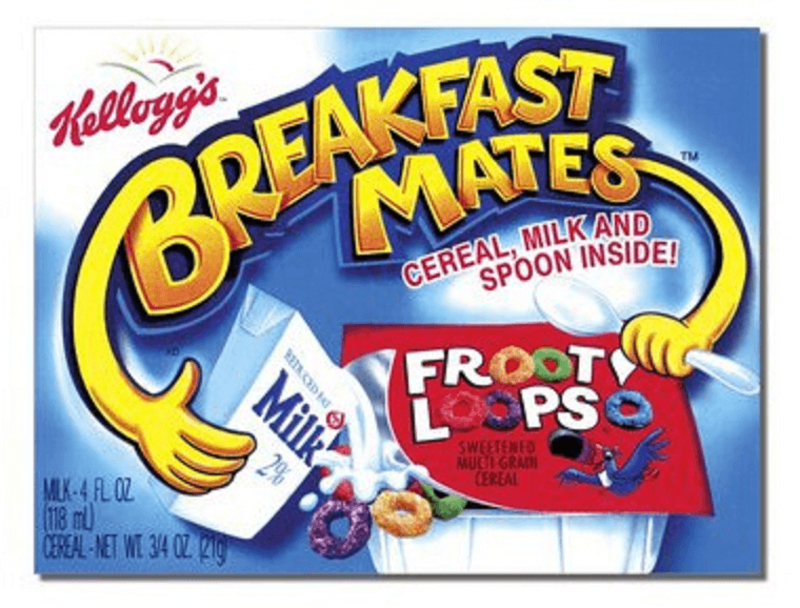
The $30 million dollar marketing campaign did not help matters, instead of showing a family on the go, they showed a family sitting down and eating cereal at the breakfast table. Only one year after its launch, Kellogg’s pulled Breakfast Mates from the shelves due to low sales.
Maxwell House Brewed Coffee
Another product meant for those who found making breakfast in the morning too difficult. In this case, brewing coffee was the difficult task and Maxwell House was making it easier by introducing pre-brewed coffee in a carton. The company came out with Maxwell House Brewed Coffee in 1990. The carton needed to be refrigerated, which confused people because there was a picture of a mug of hot coffee on it.
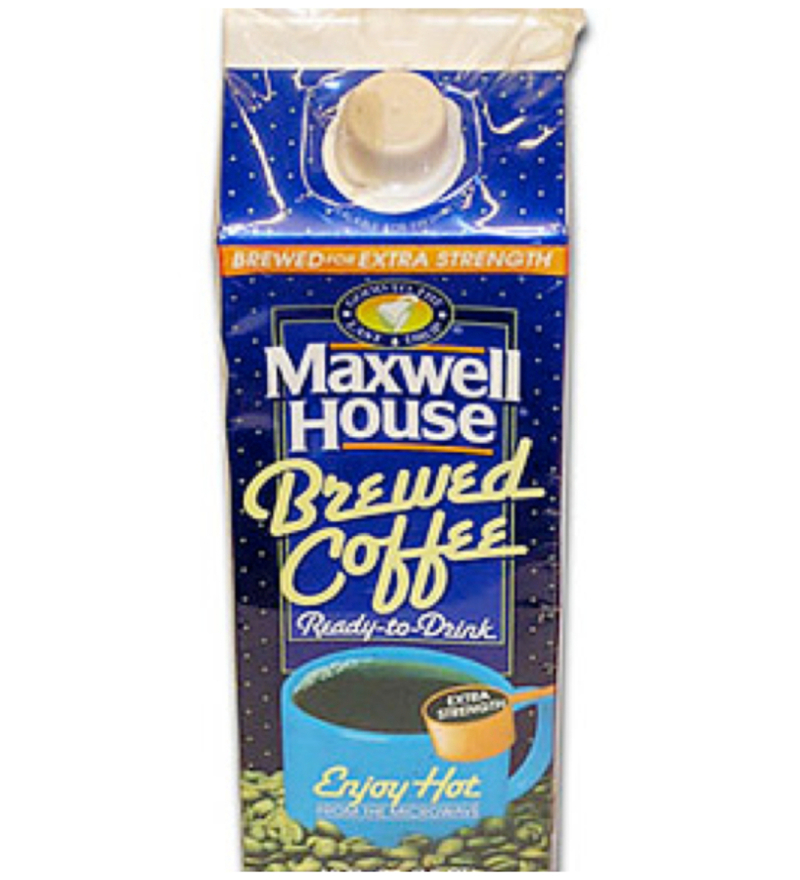
Another issue was that although it was supposed to be simple to just microwave this brew and drink, the carton was lined with foil and was therefore not microwave safe. This proved too much for consumers who felt that this so-called convenient product was too much work. Maxwell House Brewed Coffee was gone before it really began.
Hot Wheels and Barbie computers
Toy manufacturer Mattel announced in 1999 that it had acquired the rights to sell Barbie and Hot Wheels computers. They teamed up with the Patriot Computer corporation in an attempt to deal with the decline in the sale of Barbie dolls and the rise in the sale of software and hardware for kids.
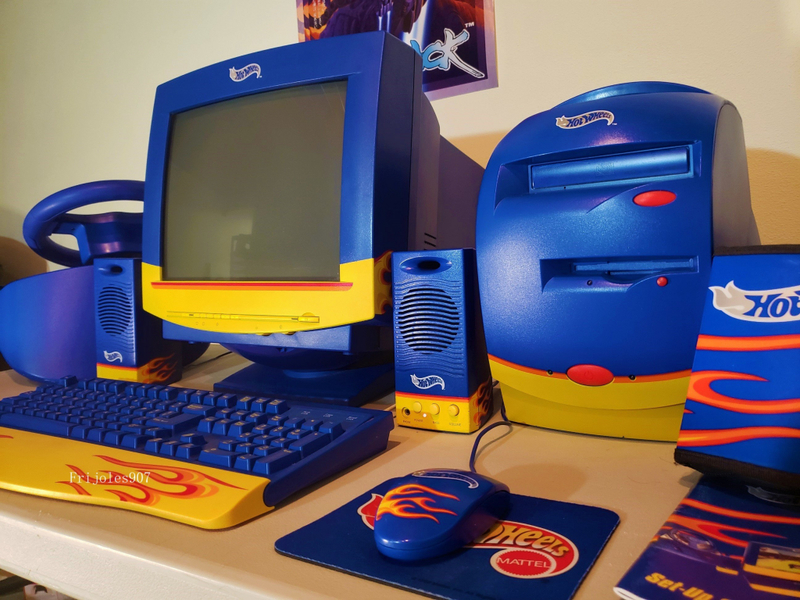
Unfortunately, the computers suffered from multiple manufacturing flaws, and the costs of fixing and replacing the computers eventually drove Patriot out of business. In 2000, only a year after the products launched, Patriot filed for bankruptcy and Barbie and Hot Wheels computers were seen no more.
LaserDisc
As we’ve seen, the home video market is not an easy one to conquer. Phillips took a crack at it with their format LaserDisk, which was released in 1978, between the era of VHS and right before DVD. LaserDisc had better sound and video quality than VHS, but the product’s numerous flaws ensured that it would not stick around for long.

The biggest issue was that LaserDisc players were only able to play discs, but were not able to record television shows, which was one of VHS’s main selling points. Another was the high cost of both the players and the discs themselves. The format, which came out in the late 70s, had a brief revival in the 90s but was ultimately forgotten.
Dreamcast
Sega mostly remembered for its most successful video game, Sonic the Hedgehog, used to be a major player in the video game and console market in the 1990s. They found success with their Genesis console and went on to launch their Dreamcast game console in 1999. Dreamcast, which many believe was ahead of its time, was the first console that allowed worldwide network compatibility.
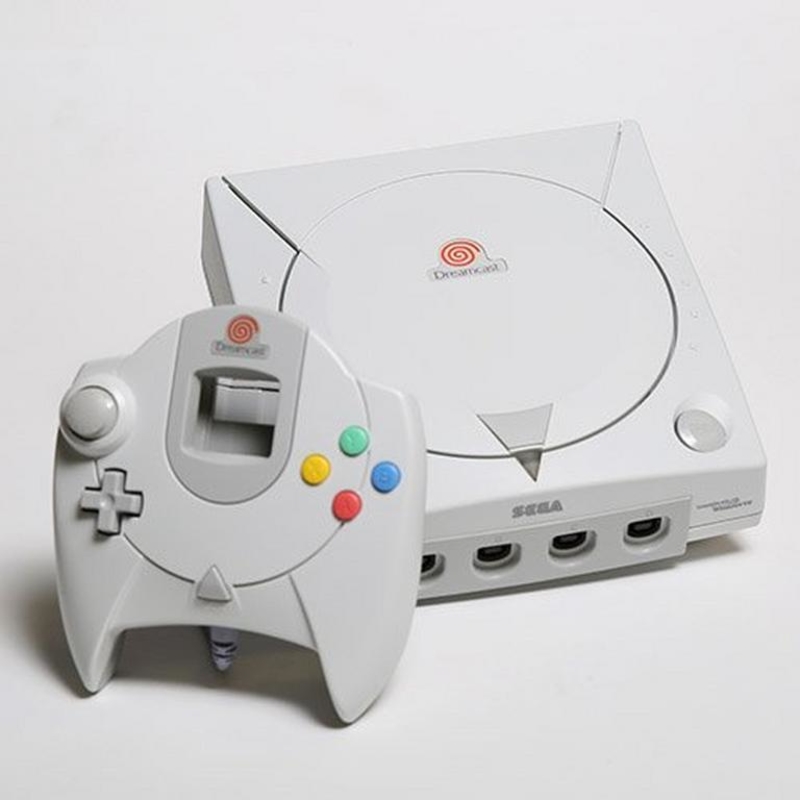
For an unknown reason, these consoles simply did not sell very well, they may have been overshadowed by the PS2 which was released in 2000. They were discontinued after only two years and were the last time Sega tried their hand at creating game consoles.
S&W Mountain Bikes
Smith & Wesson, known for their firearms, had a history of making bicycles for the police, and in 2002, the company decided to expand their operation and offer mountain bikes to the general public under the S&W brand.

Seems like bicycles were too off-brand for this company and the American public was just not buying it. Since then, Smith & Wesson have gone out of the mountain biking business and are sticking to what they know, guns.
Lisa
Apple is yet again an example of, if at first, you don’t succeed, try, try again until you just can’t anymore. Such was the case for Lisa, a personal computer with a graphic interface that was released in 1983. The product was targeted at business users who had quite a bit of extra cash as they cost $9,995 each which is what is actually equivalent to $25,000 in 2020, and that is a lot to be shelling out for a PC.
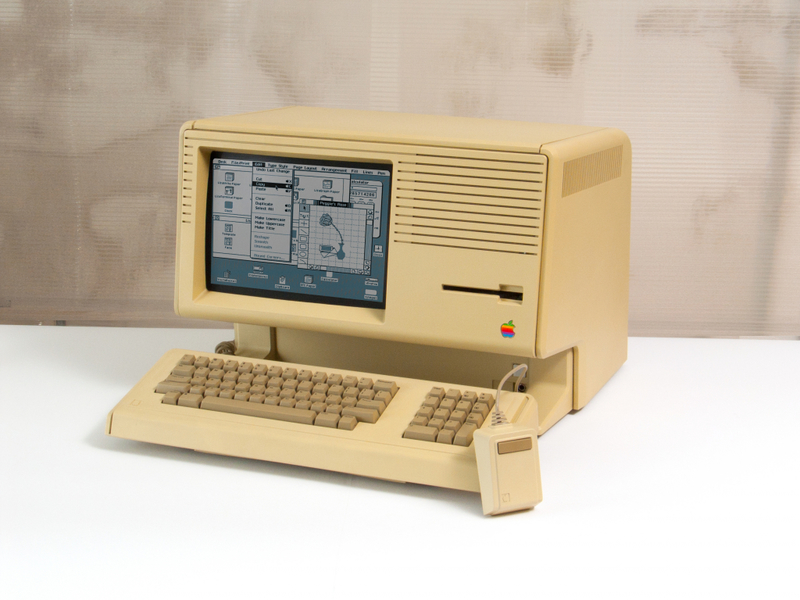
Lisa cost Apple 3 years and $50 million in development to make, but only 100,000 units were sold in the first two years. Unsurprisingly, that was enough for Apple to bench the computer in 1985.
Too Human
Video game “Too Human” was a modern take on Norse mythology and is famous for taking almost 10 years to develop. It was supposed to launch on Sony’s PlayStation in 1999 and ended up debuting on the Xbox 360 in 2008. The game had mixed reviews but what really killed it was the time and money it took to develop and the lawsuits.

The two companies behind the game, Epic Games and Silicon knights got into a legal battle in which the latter sued the former for missing the deadline to deliver the game engine. Epic games then counter-sued, and in the end, a court order forced the developers to destroy all the copies of the games, and eventually drove them to bankruptcy.
Life Savers Soda
Candy makers Life Savers decided to expand their brand by making a soda which tasted like, you guessed it, Life Savers. They tested the product and apparently audiences liked the taste, and it was released to the market in their popular fruit flavors including grape punch, pineapple, orange punch, and lime punch.
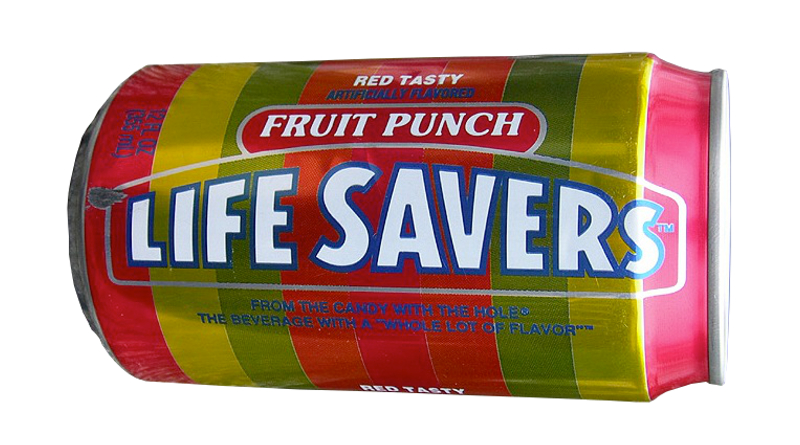
However, when the soda hit the shelves it turned out that no one was buying. Some experts have speculated that the branding and packaging led to the belief that the product was liquid candy and not soda. If that was the case, no wonder consumers were disappointed when they actually tried it.
Eons
Here is another attempt to make a go of it in the world of social media but this time for seniors. Eons were launched in 2006 by Monster.com founder Jeff Taylor as a social network for baby boomers and people over 50. For some reason, the network never took off.
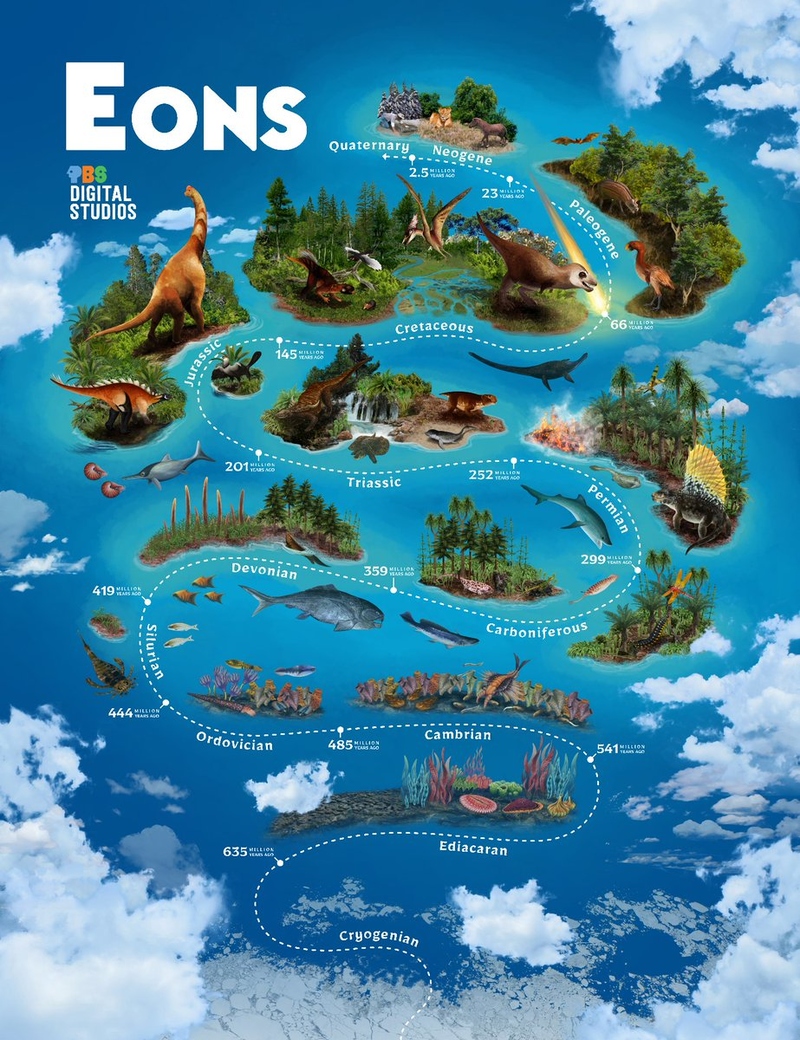
Maybe it was the fact that only one-third of people over 65 used the internet at the time, or maybe it was because all the ones that did were already on Facebook. Either way, the site never gained traction and was officially shut down in 2012.
Evian Water Bra
No one can dispute the fact that Evian knows all about water, that still doesn’t explain why they decided to put their name on a bra which you could potentially fill with their primary product. The company launched the Evian Water Bra in 2005, which was meant to offer women a cooling undergarment for warmer months.

The bra, which also included a small pouch to hold a small bottle of mineral water, never took off and was pulled from the market not long after it was released.
Astro Pants, Lululemon
If you were ever willing to pay $100 for a pair of yoga pants, you are most likely familiar with Lululemon. The company launched their black Astro Pants in 2013, but women who used them to exercise ended up showing more of themselves than they bargained over. Turns out, the pants become see-through when the wearer bent over.

The pants were recalled, but the recall did not fix the problem and the user complaints continued. Instead of apologizing, founder Chip Wilson made a comment about women with the wrong body types causing the problem. This did not go over well, and the company’s sales and stock took a beating.
Kanoa Wireless Headphones
Negative reviews can make or break a company, but in the case of Kanoa Wireless Headphones, it only took one review to break the whole thing down. If you’ve never heard of Kanoa, don’t feel bad, they were a company who wanted to revolutionize wireless headphones and raised capital by crowdfunding. Despite meeting their fundraising goal, however, Kanoa was not able to meet the standards it promised.

After some delays, the company finally sent a pair of its headphones to well-known YouTube technology reviewer Cody Crouch, AKA iTwe4kz. He gave them a terrible review which showed that he had trouble connecting them to his phone and that the charging case was not working. As if that wasn’t bad enough, he also claimed that Kanoa tried to bribe him to give them a good review. Only four days after the review was posted, the company was disbanded.
Bic Disposable Underwear and Pantyhose
Disposable razors and lighters are pretty synonymous with the word Bic. In 1976, they has the bright idea to try and corner the women’s market with disposable underwear and pantyhose. They wanted those to be sold in office supply stored next to their pens and lighters.
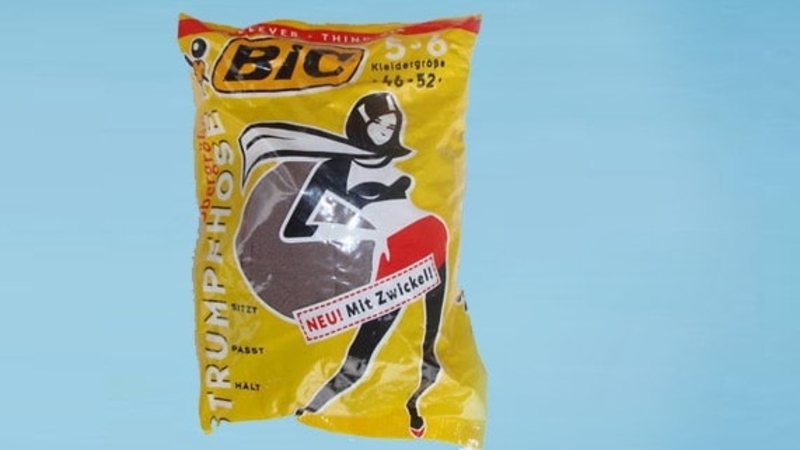
Turns out, women aren’t that interested in having their underthings associated with lighters and pens, or thinking of their pantyhose as disposable plastic office supplies. The Bic name, which the company insisted on using, was not a good match for the product and the sales lagged. Bic Disposable Underwear and Pantyhose were gone from the market within a year.
Hoverboards
Coming back to Back to the Future, every person who saw that movie growing up, was waiting for the day when they could finally ride their own hoverboard just like Marty McFly. In 2015, it seemed like that dream was becoming a reality until they began spontaneously combusting.
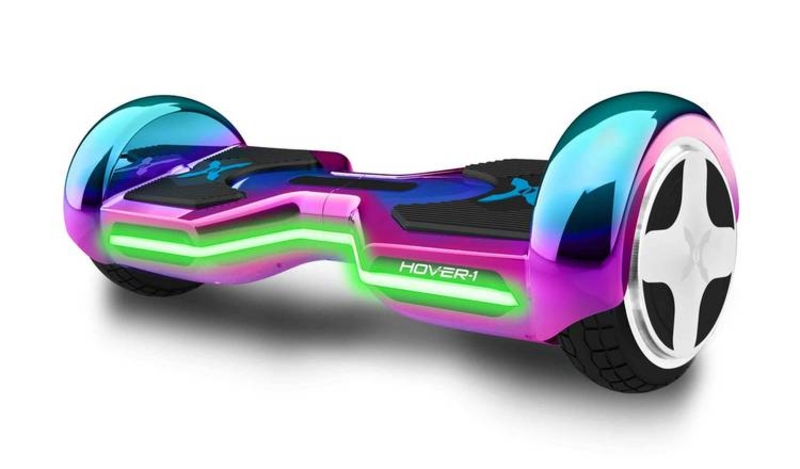
It didn’t seem to matter who made them, the lithium-ion batteries that powered the devices overheated and caught fire. By 2017, thousands of hoverboards were recalled and they were banned by airlines long before that. Seems like our hoverboard dreams will have to wait a little longer.
Twitter Peek
In 2009, Twitter and technology company Peek Inc. released the Twitter Peek, a handheld device that let you tweet anywhere and didn’t even require wi-fi. The idea behind it, was a device for Twitter enthusiasts who didn’t have a smartphone, but do those even exist, and if so why would they pay nearly $200 for this product?
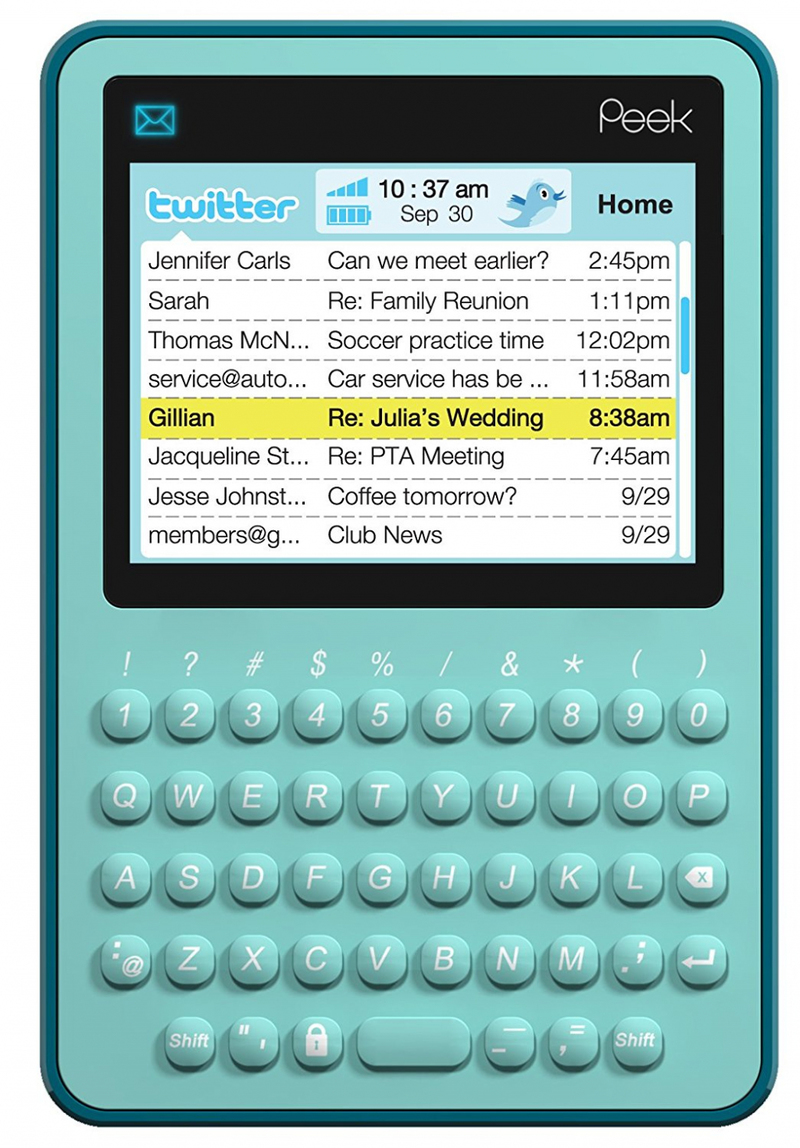
The worst part is that the device only displayed 20-character previews of tweets, and reading the whole thing was quite complicated. This frustrated users to no end and they gave the Twitter Peek a hard pass. By 2012, the company cut off all the support to this product. The only surprise is that it took so long.
Cue Cat Barcode Scanner
In 1999, the Digital Convergence Corporation decided that what people who were reading a magazine really needed was a cat-shaped device that could help them find information about things that were of interest to them without actually typing in the URL. In order to do so, all you had to do was scan a barcode in the magazine, use a USB cable to plug the Cue Cat into your computer, and just like that, you would be directed to the correct web page.
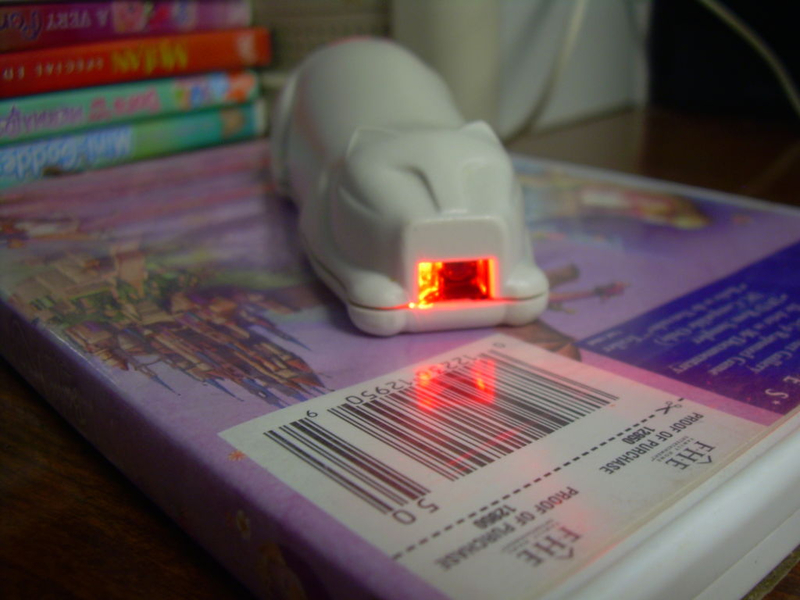
Sounds simple, right, wrong. Users couldn’t understand why they needed this device and those that did use it, had to deal with privacy issues and a famous information breach. By 2001, codes were no longer generated for the scanner and by 2005, Cue Cats were being sold for 30 cents a pop just to get rid of them.
Juicero Press
This startup company offered users a juicer that used single serving pre-packaged packets of fruits and vegetables, made exclusively by them, that the machine turned into juice. The Juicero connected to wi-fi and before each use, the packet’s barcode had to be scanned and approved. The company claimed this was to ensure freshness, but many believed it was so that you would have to purchase only their packets, which cost between $5 and $8 each.

The company raised a lot of money at first, but when claims surfaced that you could squeeze the packets with your hands and get the same results, people stopped buying the expensive juice maker. The product launched in 2016, but by 2017 they were finished, although they did manage to buy back the juicers sold.
Keurig Kold
The veteran coffee and beverage company tried to expand their brand into the in-home soda machine company, but couldn’t make it work. In 2016, they launched the Keurig Kold, a machine that could make sparkling water, soda and other cold beverages. They offered users flavors from the Coca Cola Company, Dr. Pepper and Snapple.

The machine, however, was too expensive for what it was offering, retailing at $369, when SodaStream only cost $79. The pods they sold were also pricey, costing $3.99 to $4.99 for a pack of four, and each pod only made one glass of soda. Other complaints were that the machine was loud and that it took a long time for the beverages to cool. The Kold was pulled from the market in mid-2016.
Thirsty Cat! and Thirsty Dog!
It’s hard to believe, but someone thought it would be a good idea to make bottled water for cats and dogs, which as we all know lick themselves and drink from the toilet. The water was enriched with vitamins meant to promote healthy skin and thicker fur and came in two flavors, crispy beef for dogs and tangy fish for cats.

Pet owners didn’t see the point and weren’t willing to shell out the money for the flavored water. Others believed the product was a joke. Sales were low and after a short while Thirsty Cat! and Thirsty Dog! were removed from the shelves.
Rejuvenique Face Mask
This horrifying mask, which was released in 1999, claimed to use special facial zones and electric pulses to exercise your facial muscles and eventually get rid of wrinkles and make the wearer look younger. All you had to do was wear the mask for 15 minutes three or four times a week. The company even got Dynasty star Linda Evans as their spokeswoman.
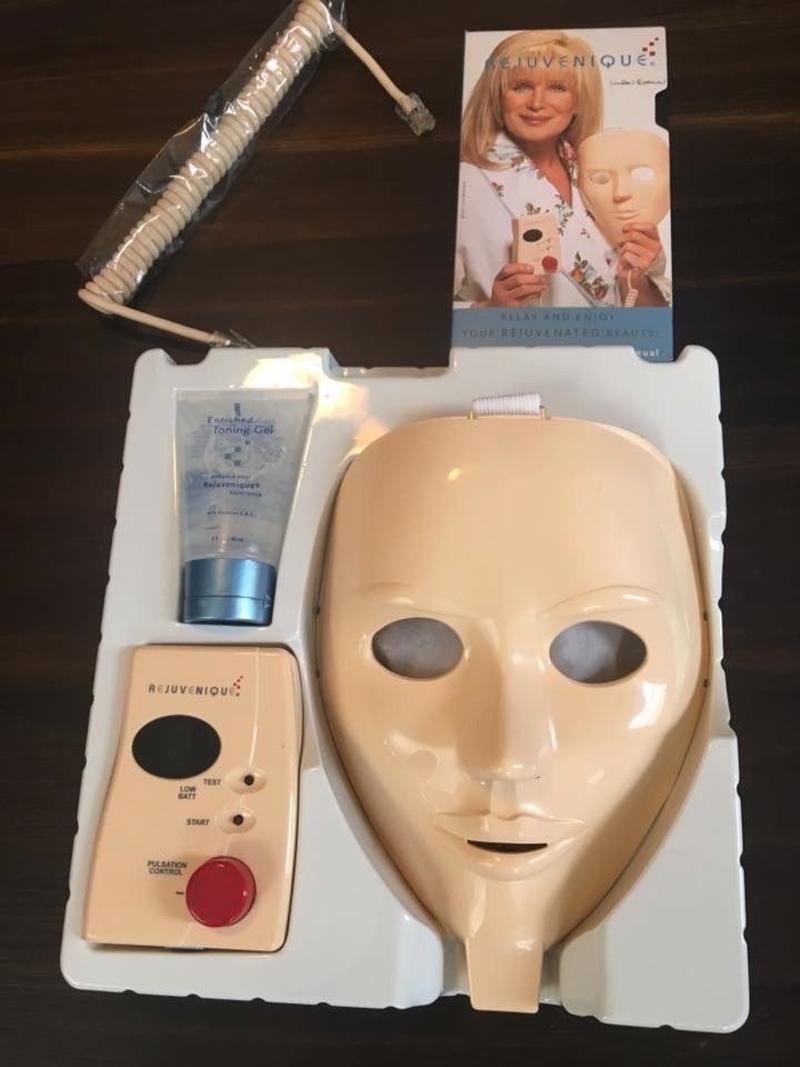
Unfortunately, the mask was never approved by the FDA, and the mild pulses were described by users as extremely painful electric shocks. Users also complained of red marks after using the mask. In 2000, the FDA issued a letter of warning that the masks were unsafe and that selling them without approval was a crime.
Bic Perfume
What Bic had been unable to pull off in the 70s with disposable pantyhose, they tried to do in the late 80s with fragrances. This company was determined to make it in the women’s market and this time it was with their brand of drugstore perfume.

The company poured $20 million into the launch, but again the Bic name did not translate into luxury items. People were just not interested in smelling like Bic. Bic Perfume was gone from the shelves by the following year, costing the company close to $11 million.
Bic for Her
Seems like Bic didn’t learn their lesson. In 2012, they once again tried to appeal to women by releasing their line of pens especially for women under the name Bic for Her. The pens were built for a woman’s comfort and offered in stylish colors like pink and purple or in sparkly cases.
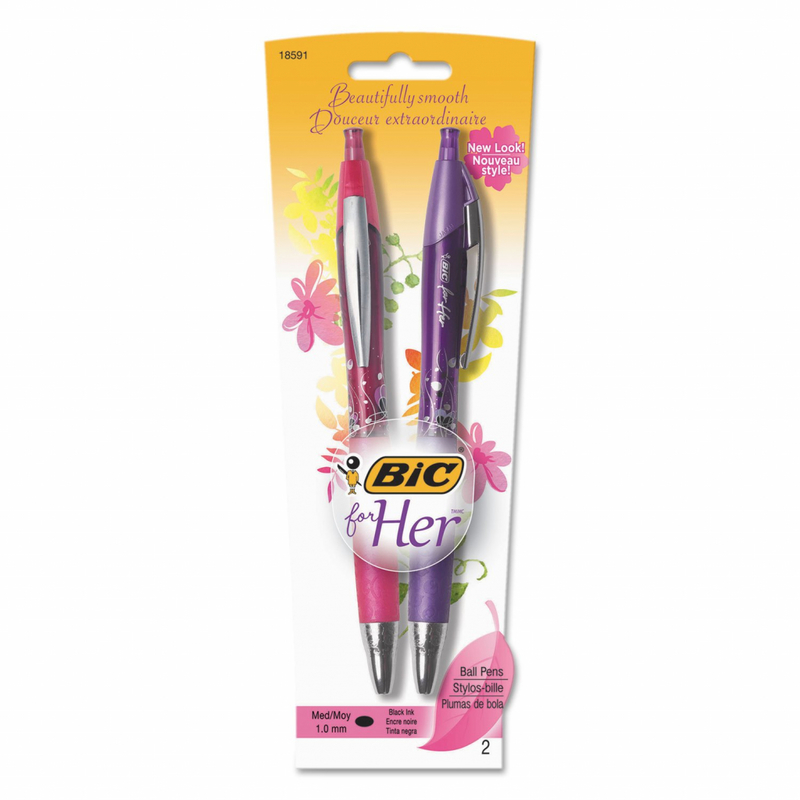
The pens stayed under the radar for a while, but in 2013 people who found them sexist began to write mocking reviews of them on Amazon. One user wrote that her brother used them and turned into a unicorn while others wondered if they needed permission from their husbands and fathers to use the pens. The pens can still be found on Amazon, but the sales and the scandal were definitely not what Bic was hoping for.
Gerber’s Singles
The world leader in baby food tried to expand its target audience to include adults and the results were indigestible. In 1974, Gerber decided to market their easy to eat (without chewing) meals into adult versions with flavors like Beef Burgundy and Mediterranean Vegetables.

Seems no one wanted to chow down on an undoubtedly easy to make jar of mush. And if that wasn’t enough, the name was an issue, it’s bad enough to eat pre-made food alone from a jar, people felt that there was no need to remind you that you were single right on the packaging. This product was removed from shelves not long after it was introduced.
Campbell’s Souper Combo
There’s nothing more comforting or easier to make than a can of soup with a sandwich of some sort on the side. In 1989, legendary soup makers Campbell’s decided to make it even easier by selling both together in one microwavable package. The product was aimed at the office crowd, singles, and latchkey kids, and came in three flavor combinations, tomato soup with grilled cheese, chicken noodle soup and a hotdog, and vegetable soup with a cheeseburger.

Things were looking good at first with solid sales but the company quickly saw them decline. The reason, heating up soup and making a sandwich was just as quick and probably easier than making the Souper Combo. Apparently microwaving both products to be hot at the same time was quite a challenge and Campbell’s quickly gave up on the idea.
Hannah Montana Cherries
In 2009, everybody loved Miley Cyrus, especially Disney, but it seems like they took putting her face on things a little too far. It’s unclear what the reasoning was behind this decision, but the character of Hannah Montana became the brand representative for cherries.
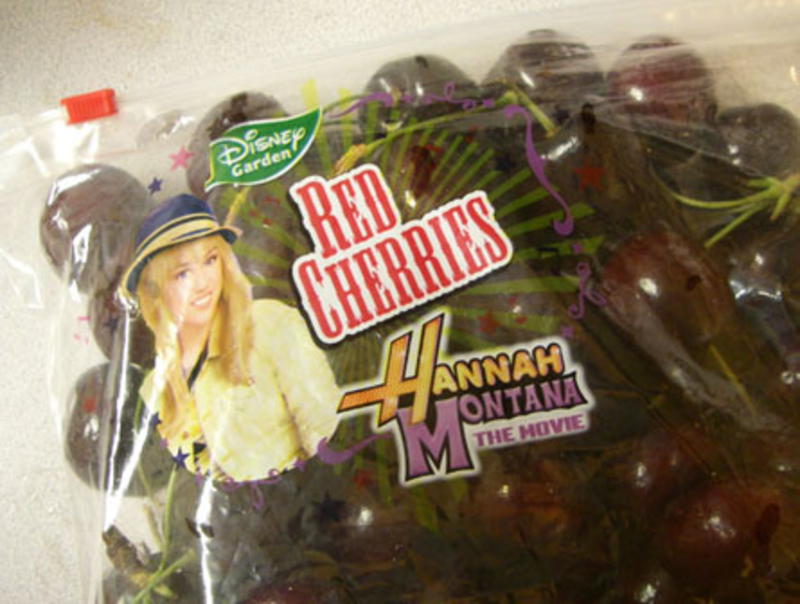
The decision raised more than a few eyebrows and soon headlines emerged saying it was inappropriate and simply put, a bad idea. Cherries remained on the market, but from then on have been Hannah Montana free.
AIBO
A robot dog sounds like something everyone can get behind. Sony sure thought so when they came out with AIBO in 1999. It was a robotic dog that could respond to 100 different commands and speak. The first batch, which included 3,000 units, sold out in half an hour, but even though Sony kept making them until 2005, AIBOs never made any real money.

Turns out people prefer real-life dogs and in 2006 Sony announced that they would no longer support man’s robotic best friend. This saddened many AIBO owners, especially in Japan, who are trying to keep their pets “alive” without the support or spare parts.
Radioactive Health Products
Back in 1898, when radium was discovered by Marie and Pierre Curie, it only took a couple of years for it to be considered a magical substance with curative powers. What is now known to be one of the most toxic and dangerous chemical elements on earth, was once considered healthy, and doctors and companies added radium to a number of health products.
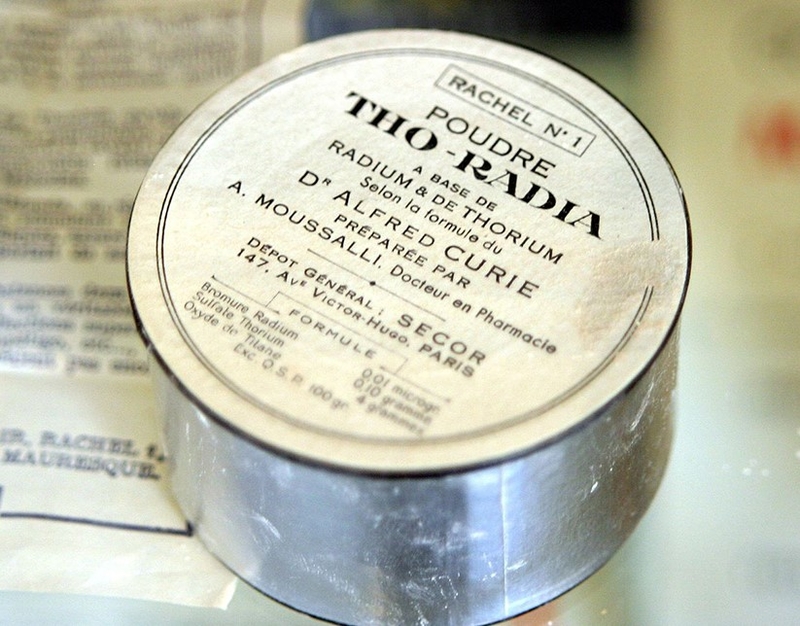
From water, cosmetics and toothpaste, to suppositories, heating pads and even medicine to treat impotence, radium could be found everywhere. Sadly, it took a very unfortunate incident for health professionals to finally understand the dangerous of radioactive products. During the 1930s, a man was taking a high dose of Thor-radium powder, which was supposed to help increase libido. The man took 1,400 small bottles of the medicine and his entire lower jaw rotted and fell off. From this point on, people started to seriously suspect radioactive health products. Thank God!
The Flying Tanks
At first, the idea of a flying tank sounds pretty cool. Your mind immediately goes to some kind of sci-fi war movie that becomes a blockbuster hit. But, in reality, this failed experiment ended up being far less glamorous. It was in the early 1930s when J. Walter Christie, an American engineer, started experimenting with the idea, which was originally intended as a way to help infantry troops on the ground by providing them with tanks.

The Soviets and the Japanese experimented with different patents, but it proved useless in the end. The grand plan was to tow the tanks behind the aircraft that carried new troops into battle, so the tanks could be readily accessible to soldiers. However, the problem was that there wasn’t any aircraft in existence that was powerful enough to carry the weight of a full-sized tank. Also, it was extremely difficult and laborious to land a tank on the ground without damaging it. Oh well, it was a nice idea in theory.
The Dymaxion Round House
The famous architect and inventor, Buckminster Fuller, created this weird-looking chrome house back in the 1930s. Fuller had the idea to create a house that could be quickly put together by your average person. Named the Dymaxion Round House, this shiny dome prototype could be shipped in a truck and assembled in less than 48 hours. The dome shape made it possible for the house to be assembled quickly while still providing great structure strength.

Unfortunately, as cool as all this sounds, the project eventually failed. Firstly because, it is incredibly hard to customize or expand a dome-shaped house. Secondly, because it is extremely hard to find furniture and appliances that would properly fit a round-walled space. It could’ve been a nice idea for a futuristic restaurant, though.
Boat Cars or Car-Boats
The mere name of this invention doesn’t exactly sound brilliant. But back in the early 1950s, the car-boat was all the rage, and many major car manufacturers saw it as the future of engineering. Technically, a car-boat is simply a boat powered by an automobile chassis or engine, and an earlier version of them were used by Cubans that were trying to emigrate to the U.S. by water.

However, the invention didn’t exactly take, and nowadays, the only boat cars you see belong to collectors and people who simply don’t know what to do with their money. The largest car-boat manufacturer to date is Tim Dutton-Woolley, the English founder of Dutton Amphibious Cars that has been producing them since 1989. Only a little over 250 models have ever been made.
Cinerama Movies
Before IMAX dazzled moviegoers, Cinerama was all the rage. However, Cinerama had a much more complicated system, which is probably why it failed so badly. Introduces in the 1950s and marketed by the Cinerama corporation, the process required three separate, perfectly synchronized projectors all working at the same time, aligned with each other.

Remember, this was before the age of digital technology, so this meant that three human projectionists with incredible skills had to sit in the projector boxes and make everything work perfectly, by hand! Needless to say, this was simply not profitable – theaters didn’t want to pay the expensive technology upgrade, not to mention the extra money they would have to shell out for the staff needed to play a single movie. Eventually, very few movies were recorded in the Cinerama format, and the invention quickly became a memory.
The Intellivision
The Intellivision was a home video game console released by Mattel Electronics in 1979. The idea was to release a console that could compete with the famous Atari 2600 of the time. Unfortunately, even though 5 million units were sold between 1980 and 1991, the Intellivision was discontinued in 1990, and ended up almost bankrupting the company.

This was Mattel’s only video game console until it released the HyperScan sixteen years later, in 2006. In a nutshell, the toy/electronics giant simply could not compete with the wildly popular Atari.
Portable Record Players
Back in the 60s, when vinyl records were at an all-time high, many companies came up with the idea of producing portable record players. One of the most famous brands was the Emerson Wondergram, marketed as ‘the world’s smallest record player’, and produced from 1960 to 1965. But this invention had a very obvious problem – LP records aren’t exactly small, and need to be handled with extra care, so they weren’t exactly portable.

Another huge problem was that, in order to play a record, even if it was with the portable player, you had to find a leveled surface to set the player and be extra careful that it didn’t bump into anything. Clearly, not a great quality to have when it comes to anything portable. And so, five short years saw the end of the Wondergram and all of its friends.
The Readamatic Robotic Speed Reader
Invented in 1963, the Readamatic Robot was a device that consisted of a small box with a metal arm and a second metal bar at one end. The metal bar or mechanical plate would slide down the page of a book so it could help the reader maintain a certain pace. The goal of the Readamatic was simple: to help children and adults read faster. Unfortunately, this robotic speed reader created more problems than it solved.

The gadget was very loud, and its metal plate would emit a screeching sound every time it slid across the pages. Obviously, these are not exactly the best conditions for anybody to read in, let alone focus. The Readamatic was short-lived and never to be seen again.
Daylight Motion Pictures
The fact that this idea’s slogan was “Witness the shows sitting in a fully lighted auditorium”, already made it very questionable. And yes, this was actually a thing back in the 1910s. Apparently, some people thought it would be a fantastic idea to play movies in an auditorium that was completely lit. As movie theaters started opening in the 1900s, many attendees didn’t like the fact that the auditorium was completely dark.
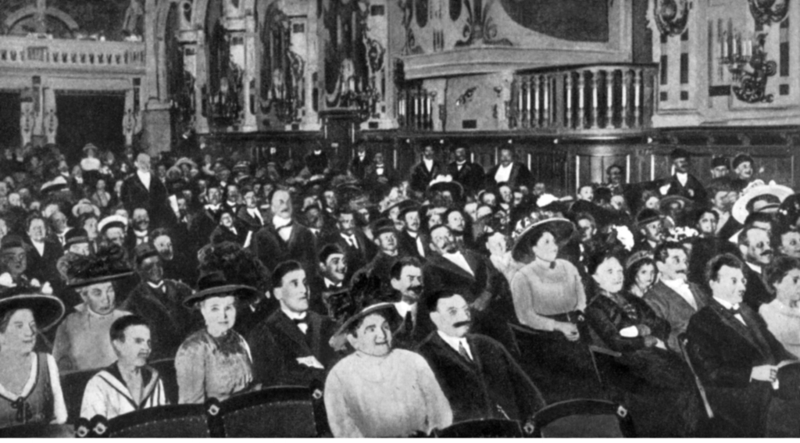
One theater owner even said that he preferred the space to be completely lit so people could watch over their loved ones and avoid ‘eye fatigue’. And so, ‘daylight motion pictures’ became a thing all over the U.S. The whole thing was a combination of darker screens, stronger projectors and a lot of hope. But as you probably guessed, this ingenious idea was short-lived because, obviously, lit theaters damaged the quality of the picture. So, moviegoers slowly started to feel safe in dark theaters, and the rest, as they say, is history.
Electrified Water
Unfortunately, this invention was actually as bad as it sounds. Marketed as “a sure cure for headaches”, electrified water was all anybody could talk about back in the early 1900s. Apparently, people thought that if they ran an electric charge through a small body of water and then stopped, the water would acquire a myriad of new properties that were wonderful for your health.
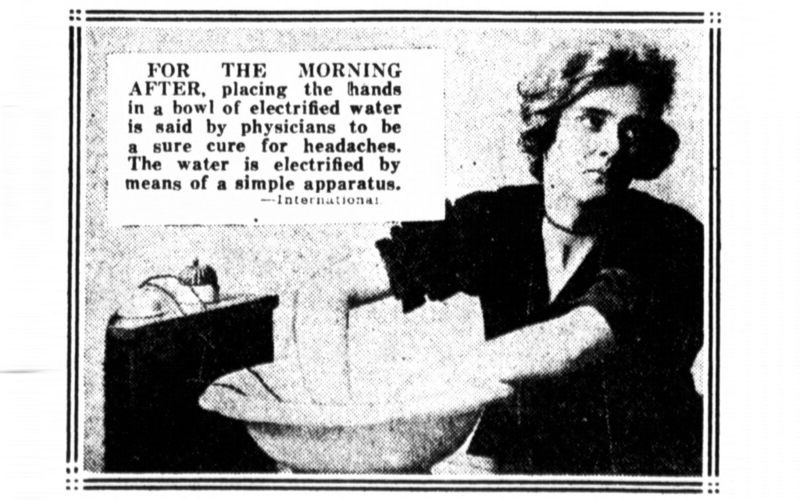
People were even saying that clothes could be cleaned and sterilized with electrified water, without the need for soap. It was even used for drinking and watering plants, and in 1920, a doctor even went as far as to suggest that dipping your hands in electrified water was the best way to cure a hangover. Even though this wasn’t a dangerous idea, because the electric charge usually stopped before people touched the water, it was still absolutely ineffective for all intents and purposes. It didn’t clean, sterilize, or cure anything at all.
The Fiske Reading Machine
In 1922, celebrity inventor Bradley Fiske created the Fiske Reading Machine, a contraption that everyone thought would revolutionize literature. Marketed as the machine that “would render printing presses obsolete”, the invention was born from the idea that books would be printed on very small pages, in very tiny letters, and people would hold customized magnifying glasses up to their eyes in order to read them. It already sounds ridiculous, doesn’t it?
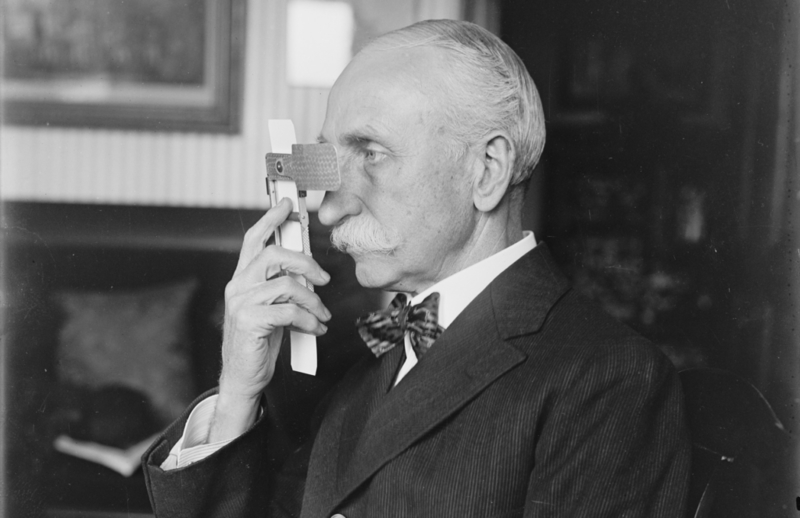
Surprisingly, many publications claimed that the Fiske Reading Machine was great for a number of reasons: cheap manufacturing, less paper needed, longer durability of books, no need for eye glasses anymore, poor people could afford it, easy and cheap to send by mail, more free space at home, etc. Now, while all of this may be true, the Fiske reading machine was very short-lived, since, realistically, people didn’t actually enjoy holding a magnifying glass up to their eyes for countless hours.
The Welte-Mignon
The Welte-Mignon reproducing piano was introduced in 1904, and was quite an interesting twist on the already existing player pianos of the decade. Player pianos were pianos that played pre-recorded music with the use of automated cylinders, but what made the Welte-Mignon special was that it focused on the performance, as well as the music. A famous pianist could play songs on the Welte-Mignon and the instrument would record their performance on special rolls.
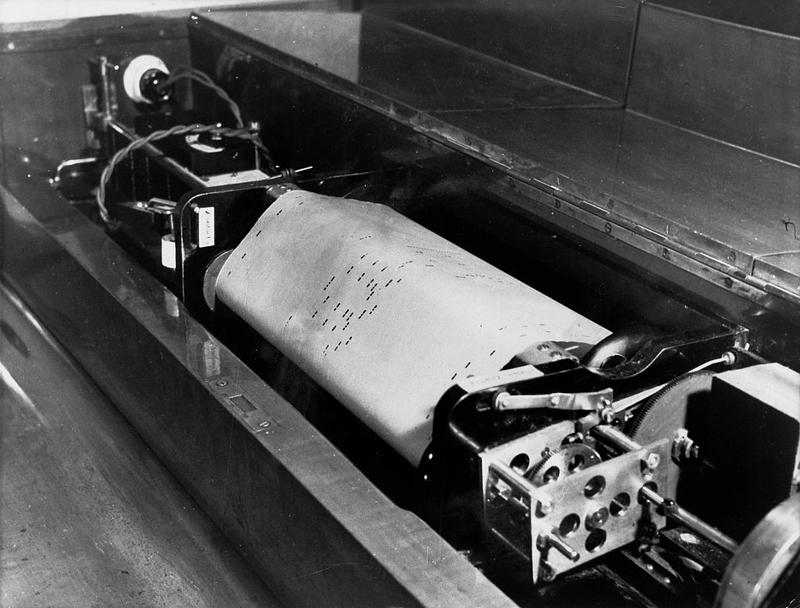
These rolls could then be taken home by anybody that owned another Welte-Mignon, and listeners could relive the exact same performance over and over. Many thought it was a musical revolution, and while it was indeed a marvelous instrument used by several composers of the time, this reproducing piano was even replaced by the more modern record player. By 1930, Welte rolls were no longer recorded.
The Gas-Shooting Riot Car
The Gas-Shooting Riot Car sounds like something out of a ‘Mad Max’ film, and in reality, this wasn’t so far from the truth. If you think that we’re living in a terrible, politically incorrect world, the 1930s were far worse. Back then, if a group of protesters were making too much noise, the police could run over them with a huge vehicle that also shot water, bullets or poison gas streams.
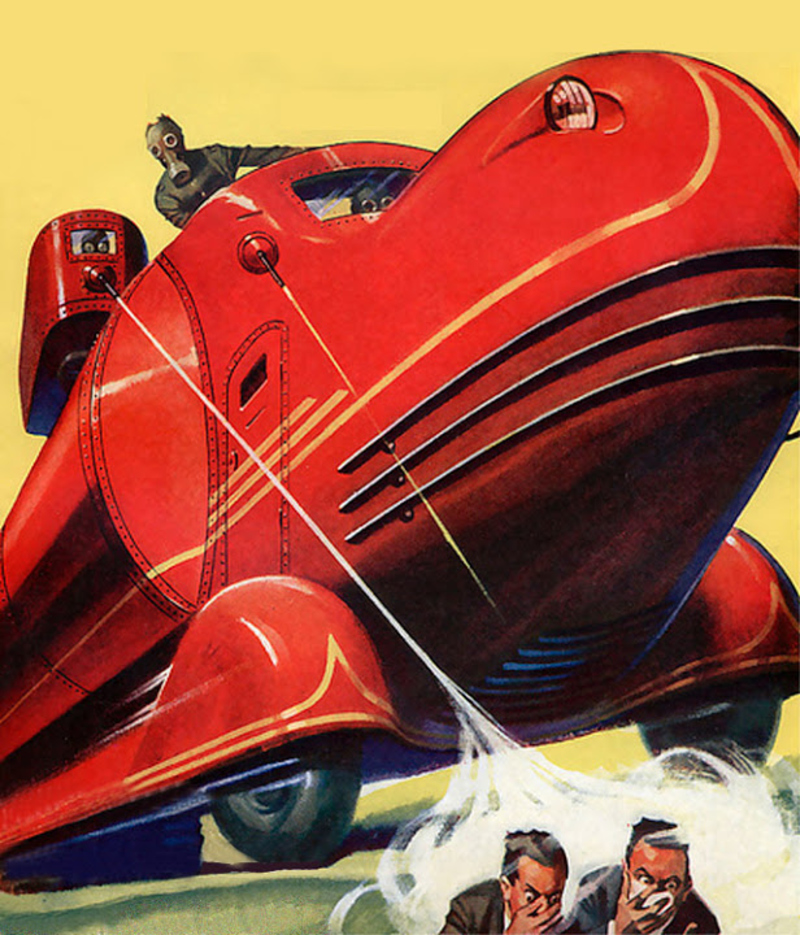
Patented in 1938, the Gas-Shooting Riot Car was meant to disperse protesters and dissolve riots, but obviously, it was a clear and savage violation of basic human rights. Thankfully, this car stayed in the ‘idea’ phase, and was never built. Politicians probably had a second thought and decided the consequences and future lawsuits just weren’t worth it.
The Slendo Massager
Weight has been an obsession for people for a very long time, especially since society decided that a thin and slender body equals beauty. So, when the novel Slendo Massager appeared in 1940, people went crazy, especially women. The machine consisted of a series of metal rollers that massaged women’s hips and thighs, which supposedly blasted their fat through electricity.
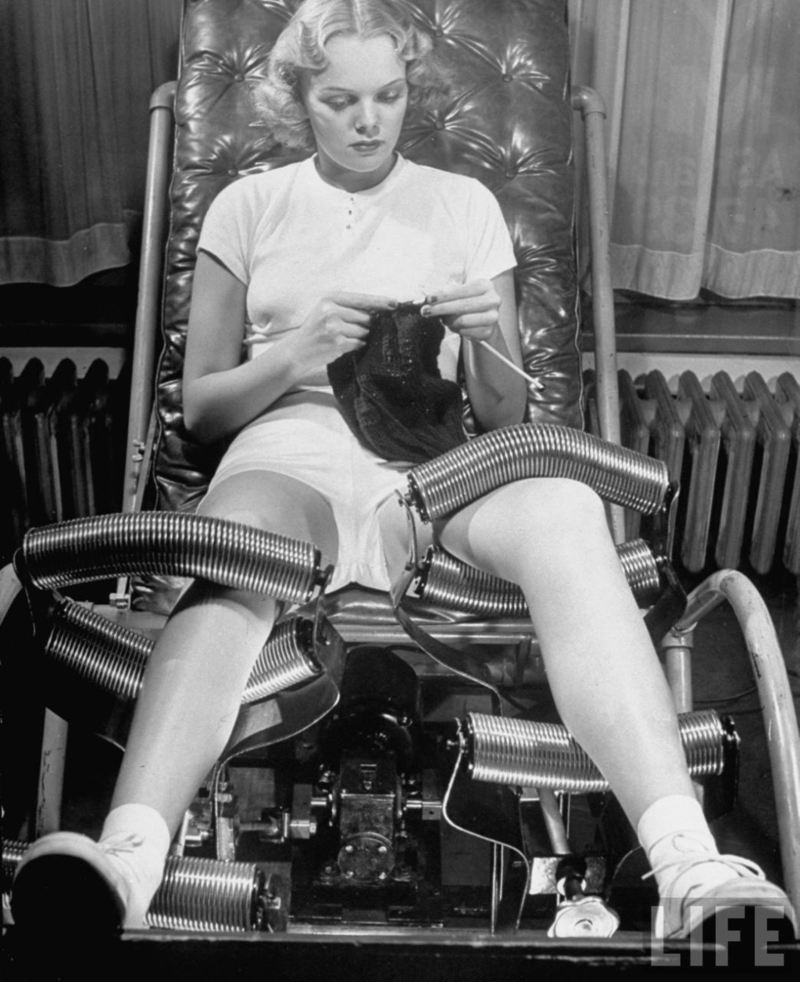
Basically a glorified massage chair, women used to stand or sit while “losing weight”, and obviously, the Slendo Massager became wildly popular across the country. Similar to countless machines that have been produced since (the Ab Energizer, etc.), the idea was that the electrical currents helped melt away the excess weight by causing muscles to contract. However, by the end of a number of sessions, the only thing Slendo Massager users were left with, was marks from the metal.
The Flying Saucer Camera
The 1950s were an interesting decade for many different reasons, but one of the most fascinating is perhaps the extremely high amount of UFO sightings in the United States. The government was so fed up with people constantly reporting to have seen a UFO, that they decided to come up with a solution. They would introduce the Flying Saucer Camera.
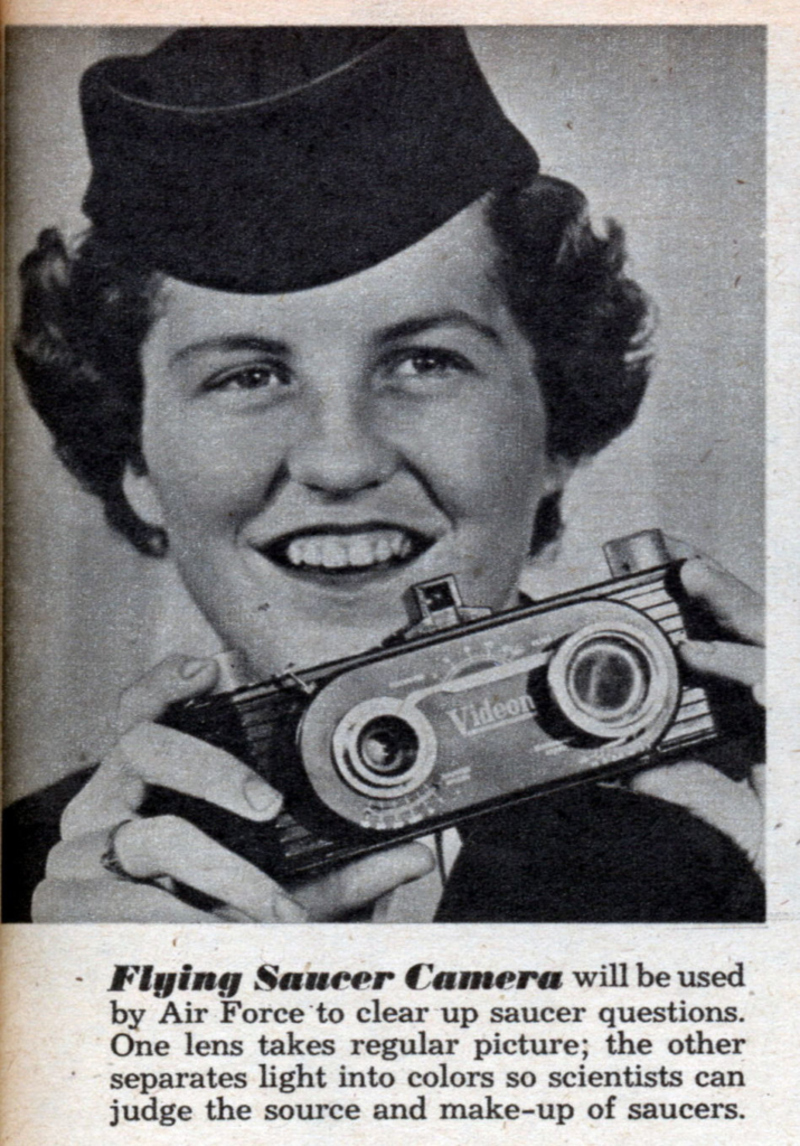
The Air Force came up with this special camera that, apart from sounding like something from a sci-fi series from the 90s, had two special lenses designed to identify the source of a strange light. It worked trough a simple process: one lens took a regular photo while the other separated the light into colors, so that its origin would be clear. Needless to say, this X-files camera didn’t last very long on the market.
Monowheel Vehicles
It is truly incredible to discover what people considered “brilliant ideas” back in the day. In 1869, someone had the genius idea of introducing a mono-wheel vehicle; meaning a motorized vehicle with only one wheel. And yes, that is exactly as safe as it sounds.
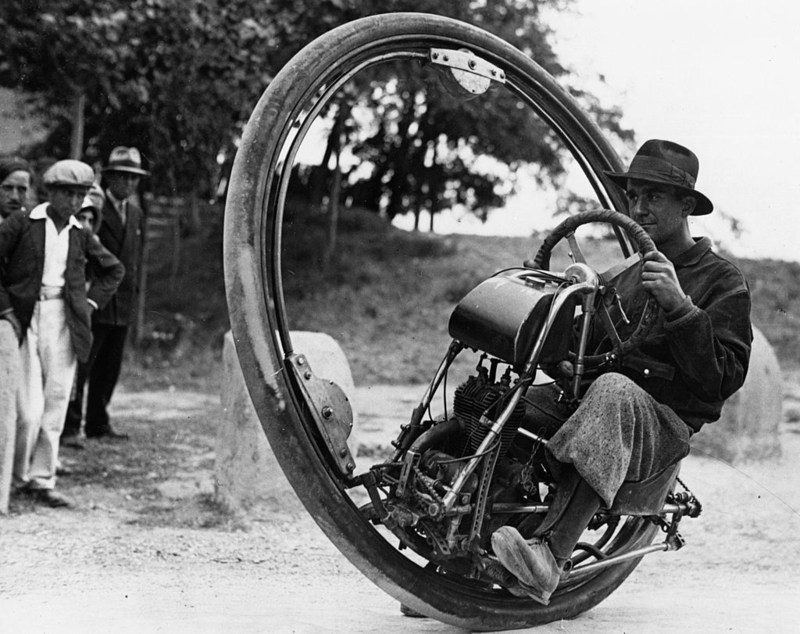
Four wheels is great, two wheels is a bit risky, but one wheel? That’s just madness. Logically, this fabulous idea died almost instantly after people realized it was totally unsafe, very loud, and extremely difficult to pilot. but hey, you can try a unicycle instead!
The Cigarette Umbrella
This is by far one of our favorite inventions on this list. The Cigarette Umbrella was a fantastic little invention from back in the 1930s, and it was just that – an umbrella for your cigarette. Even if you’re not a smoker, you can surely understand the logistic problems of smoking in the rain, so an ingenious circus clown came up with this brilliant idea.

He created a tiny umbrella that could be attached to the end of a cigarette holder that allowed smokers to enjoy their vice without fearing the rainy weather. Sadly, no one took this seriously enough to invest properly and after a while, the wonderful Cigarette Umbrella just disappeared.
The Phone-Answering Robot
Even more so than now, the 60s and 70s saw a huge fascination with robots and futuristic themes. In 1964, someone decided to build a phone-answering robot, and at first, it seemed like a great idea. The only problem was that, it was more like a phone-picking-up robot, since it couldn’t talk back, play a greeting or message, or even record the caller’s voice!
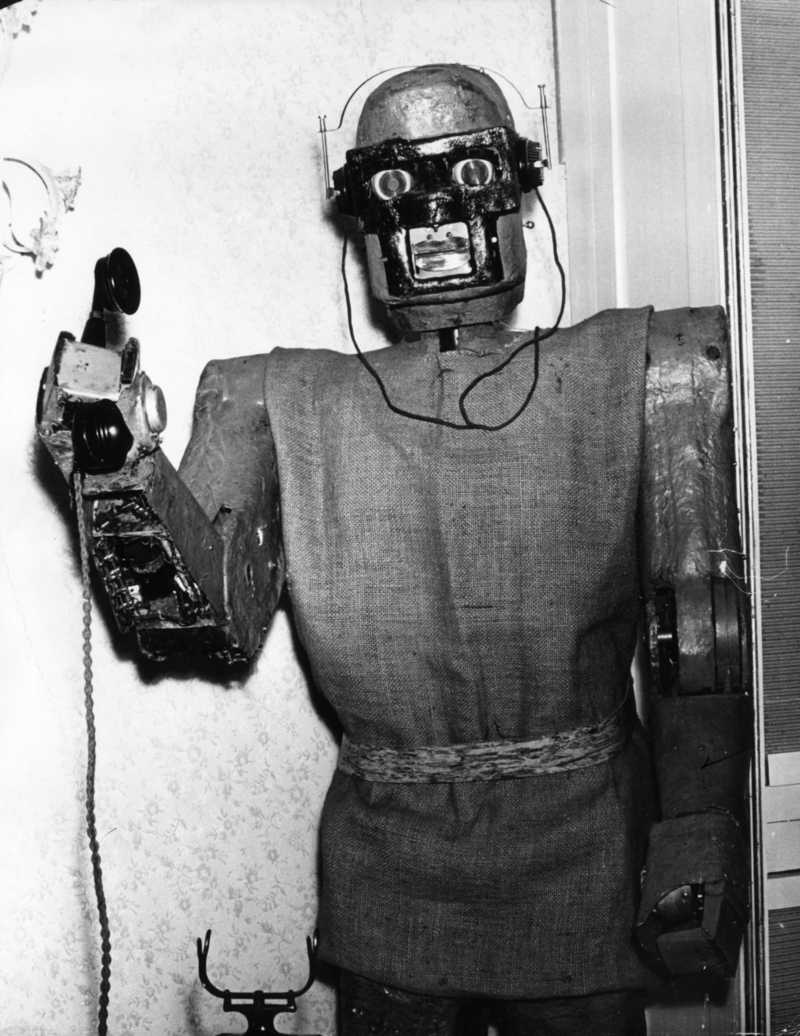
In theory, it was a good idea, but practically, it just didn’t hold up. Sure, it looked incredibly cool and made you look like you had C-3PO from ‘Star Wars’ as your personal receptionist, but, sadly, it didn’t simply didn’t work.
The 20th Anniversary Mac
Companies often release new, trendy products to mark their anniversaries, and Apple is obviously one of them. Back in 1997, Apple launched the famous Twentieth Anniversary Mac. The computer was a cute machine that featured a very thin (remember it was 1997) screen and a detachable track-pad, as opposed to their regular mouse.

The problem was that only very rich Apple collectors could afford them, because at an initial price of $7,499, who would’ve dared?! The computer was a flop, and after a few short months, the price dropped to $1,995 below the cost of production. Obviously, the anniversary Macs weren’t selling.

You Only Had One Job! The Most Epic Marketing Fails

40 & Fabulous: Celebs Who Became Moms Later in Life

20 Unique, Fun Family Pet Names
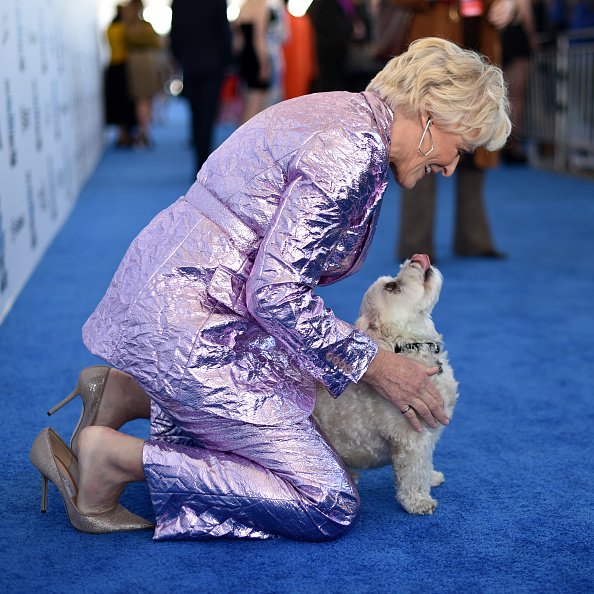
Show Stopper: Meet Glenn Close’s Adorable Date at the Independent Spirit Awards

The Villainess: The Most Intriguing Evil Women in Film History

These Instagrammers Took Their Photo Edits to the Very Extreme

The Golden Raspberry Awards: The Worst Movies of the 80s, 90s and 2000s

Celebrities Who Served in The Military

You Won’t Believe What These People Are Wearing to the Grocery Shop

These Countries Have Some Real Beef With America

